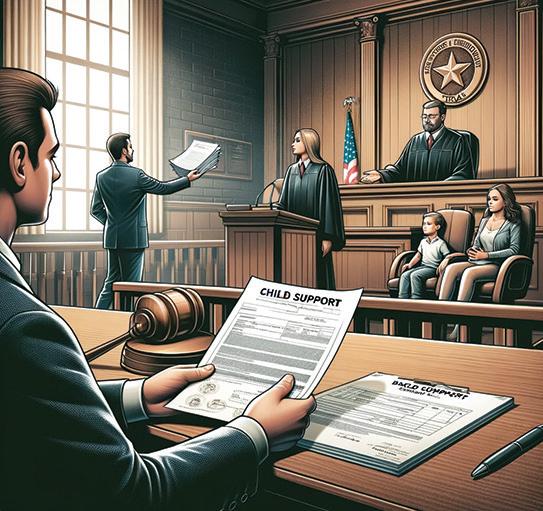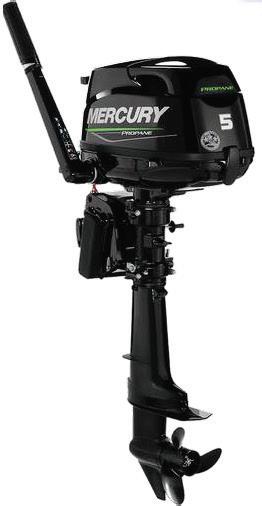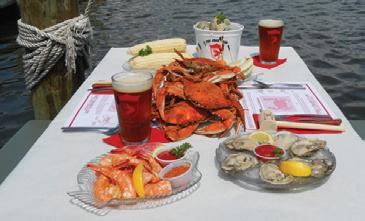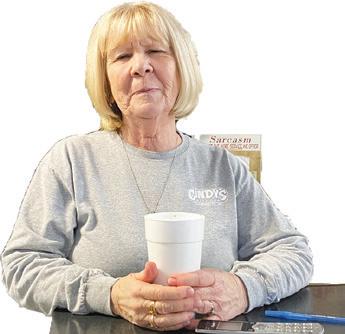Tidewater

Times August 2024







our famous tent sale returns!
5 0 % O F F EVE RYT H I N G
B l u e M o o n S A L E


















Victoria Wyeth - In Celebration of Her
Departments:










Times August 2024







our famous tent sale returns!
5 0 % O F F EVE RYT H I N G
B l u e M o o n S A L E


















Victoria Wyeth - In Celebration of Her
Departments:








Donna Tolbert-Anderson
Donna Tolbert Anderson is an outdoor enthusiast and a passionate photographer of the natural world. Sharing with others what she captures with her camera has always been important to her. Through her photography, she shows the beauty of wildlife throughout the seasons, with the majority of her imagery coming from the Mid-Atlantic region. Off the beaten track photography trips to Alaska and Churchill, Manitoba infuse more “wild” images into her body of work. Spending time in the natural world as a spectator and photographer provides a relaxing escape from today’s hectic world.
Her work has been published in various local magazines; she has exhibited at the Waterfowl Festival, and was juried into an exhibit at the Academy Art Museum. She has worked with non-profits, providing stock images used in their publications. Donna has been a Saturday vendor for over 17 years at the Easton Farmers Market, offering canvases, metal prints, and fine art prints of her work. In addition, her artwork can be purchased directly from her website, www.whiteegretstudio.com.


Sanderlings on the beach.


by Helen Chappell
I used to love covering court. It’s the one thing I miss about my journalistic career.
Few live events have thrilled me as much as a courtroom. The smell of old books and slightly unwashed humans. The cast: the judge on the bench, the lawyers at their tables facing him, the defendant, the jury, the spectators, the bailiffs—it was like Perry Mason, only mostly
mundane. But even a dull civil suit between a contractor and a homeowner beats the living daylights out of a town meeting where elected officials drone on and on about the dullest trivia for hours without accomplishing anything.
Court has drama. And I do love drama. In my early days in the gallery with my reporter notebook and my Altoids, I was learn-



ing stuff that would later come in handy when I went back to fiction writing.

It all started when I landed a job on a Talbot County shopper that is long gone. I only landed the gig because my friend was resigning to go back to Louisiana with her Cajun husband and no one else wanted it. So I got tossed into it with no guide, no help and nothing but a copy of the AP Style Guide and Libel Manual. Frankly, the home office of the paper in Cambridge was so poorly run I could have made stuff up and they wouldn’t notice, as long as Talbot advertisers bought space.
So I bumbled my way through, and I made a lot of mistakes. One

Courthouse Barnacle
was misquoting then-State’s Attorney Scott Patterson, who was gracious enough to forgive me, especially after a stressed and shamed Helen burst into tears in his office. Scott was patient and helped me find my way through the mysteries of the court.


I covered town meetings and birthdays of centuriums and other events. I was a regular at Dogwood Cove, where I covered the waterfront and learned about waterman culture. I covered all kinds of community stuff, made a lot of friends and learned a lot, which I absorbed like a dry sponge.
But it was court that snagged my interest. The ancient rituals, the drama, the personalities, the people watching and of course, the subject of the trial. Seeing my struggles, The Honorable William S. Horne, who was judge of Circuit Court in those days, took me in hand and schooled me on the whole thing. It didn’t hurt that Bill was a reader of my column in the Baltimore Sun . I think that’s what made him take a shine to me. In cop talk, a mentor to a rookie is








Who says you can’t have a Contemporary Kitchen in a Traditional Home? By choosing wood finishes, adding glass elements, and re-using the existing apron-front sink, this kitchen and breakfast area stands out in design without harshly juxtaposing the rest of the house’s style. The same cabinetry was used in both areas of this open-concept room, but adding a black granite waterfall top begins to transition you away from the mostly-white kitchen and into the rest of the living space in the home. If you like the look of a sleek and modern kitchen, but worry about how it will blend in your home, let us be the experts.

Visit our Showroom at 1 East Dover St. in Easton
Designed by Jennifer Gilmer and Alison Bridges

Grace and Grandeur! Welcome to the iconic Albanus Phillips house (c. 1913) Steeped in history and tradition, this Queen Anne style house with Colonial Revival influences has enjoyed a storied past as a private residence and former B & B. Boasting extraordinary craftsmanship and millwork, a grand foyer with coffered ceilings, 3 stunning parlors, majestic formal dining room, and grand leaded - glass sunroom. Home also hosts 10 bedrooms, 4.5 baths, drawing room and gallery, 6 fireplaces, large kitchen. Located in the historic district of Cambridge conveniently located in town close to dining, shopping and marinas. House being sold AS IS. $750,000



Courthouse Barnacle
called a “rabbi,” and Bill became my rabbi. He patiently and generously explained the protocol and process of the legal system and I began to follow it. This was real life drama and I loved it.
In time, I’d end up stringing trials all over the Shore for various papers and outlets and see the inside of more courtrooms and casts of characters than a chronic criminal. In fact, I could often identify a frequent flyer.
But Talbot was the best. My office was right across the street, I knew everyone and, for a while, had a key to the side door to let myself in when a jury debated late into the night.
Homicide trials were my favorite, but we didn’t get many of those in Easton. The outstanding one was the woman who killed her husband during a murder mystery weekend at a St. Michaels resort. What made it interesting was that both Scott Patterson and Assistant State’s Attorney Henry Dove were in the cast of the murder mystery. She made a lot of amateur mistakes and got convicted, but that’s another story.
Monday-Saturday 10:30-5:30

Another weird homicide trial I covered was down in Somerset County. Guy got fed up with his mother-in-law, killed her and buried her dismembered body under the trailer. But most of them were


Courthouse Barnacle
just sad and ugly with a cast of fools.
Bill did not suffer fools gladly, and I got the gavel and a dirty look a time or two for various misfeasors, but when he turned his righteous wrath on other violators, it could get interesting.
Most of the docket was drug related, and that was more sad and angry than anything else. Drugs continue to be a problem around here, but it’s always interesting to run into someone who remembers me covering their trial, and how they’re out of jail now.
Bill often had good reason to be short with people. Take the two Oxford retirees, Formerly Impor -


tant People (FIPs) who were suing and being sued because some’s new deck blocked the morning sunlight in someone else’s bedroom. This is the sort of drama we see all the time in Oxford, but when a court has a docket backed up with criminal cases, something like this can make a judge turn his full sarcastic wrath on plaintiff and defendant. Bill blistered them, and no one could blame him. FIP’s always

EXCEEDING EXPECTATIONS!
Lona has lived on the Eastern Shore her entire life. Her local knowledge and connections make her an expert in the area. Providing customer service with honesty and integrity is important to her!



Courthouse Barnacle
think they’re more important than anyone else, until they encounter the former head of the state Judiciary Committee who is now a sitting judge.
I always found Father’s Day interesting, no matter who was presiding it or what county. Judges HATE Father’s Day for a very good reason. It’s the day when deadbeat daddies are subpoenaed into court because they haven’t been making their child support payments.
This day, and it usually takes a full day to hear all the cases, puts judges in a very, very bad mood. No one likes deadbeat parents, except their current girlfriends, which I will explain in a minute. It’s the excuses these guys come up with set judges off.
“I can’t make the payments on my new Mercedes and pay child support!” is, I am sad to say, a version of an excuse they all seem to have.

The courtroom walls shake with the blistering the judge hands out.
“Your children cannot eat a Mercedes, Mr. X!”
If they don’t pay up then and there, they go to jail until they do pay up or do some time.
At the end of the day, I would be walking back to my car, passing the current girlfriends shouting up to the windows of the jail. Nine times of ten, they’ll bail deadbeat daddy out. I was young and dumb once, but not that dumb.
In a way, I miss court, but it was time for me to move on to other things. The shopper closed and most print media is in trouble. I wrote for the Sun and then the Washington Post, then went back to civilian life.
I met a lot of interesting people and heard a lot of interesting stories. So many of my court days friends are gone now, and I do miss them. But everything I’ve learned, I’ve been able to put to use. Real life isn’t Perry Mason, but being what’s known as a courthouse barnacle was a life experience on my bucket list.

Helen Chappell is the creator of the Sam and Hollis mystery series and the Oysterback stories, as well as The Chesapeake Book of the Dead . Under her pen names, Rebecca Baldwin and Caroline Brooks, she has published a number of historical novels.





A Waterview Gem, nestled in the heart of the popular Village of Neavitt. This c. 1900, Eastern Shore cottage has been carefully updated and expanded and now includes 2-3 BRs, 2 full baths, a generous kitchen/dining/living area ideal for entertaining. Wraparound screened porch, fabulous upper level deck overlooking the large backyard. Close to park and public landing. $525,000 Views of San Domingo Creek from the wonderful brick floored screened porch or upper level deck. Adjacent to the nature trail, waterfront park with public landing and kayak launch. 4 BR/3 ½ BA cape cod has a generous living/dining area as well as a casual brick floored dining area overlooking the “Bay Wise” gardens - a serene oasis. Detached shed and off-street parking. $1,249,000

















by Bonna L. Nelson
The flood of sounds, noises, and voices which suddenly break into the consciousness of the person who has not heard them for years is very much like the first impact of direct sunlight on a person who has lived in a dungeon. Sidney Blackstone, hearinghealthmatters.org
A SUPER AGER is what I want to be! One of those folks who lives into their 80s, 90s and over 100 with vigor and joy. We all want to live longer and healthier, attain longevity with quality of life and celebrate major age milestones in premium health, right?
Did you know that hearing well is one of the secrets to living longer? A surprise to me. In my extensive research on aging vibrantly, I learned that if I wanted to achieve “Super Agedom” I needed to address my hearing health, among other changes.
I had to bite the bullet and admit that I needed hearing aids! And now I love them. I have my husband, John, to thank for encouraging me and my audiologist, Dr. Corinne Waterman, Au.D. of Audiology Associates, Easton, MD, office. Dr. Waterman provided me with testing, prescribing, fitting and educating.

She patiently answered all my questions and is now training, coaching, encouraging and providing me with comprehensive hearing care and support. Audiology Associates is recognized as Maryland and DC’s leading team of advanced audiologists.
I am now an enthusiastic hearing aid cheerleader! I am proud to say that I wear hearing aids. I show them off like prized jewelry. I am proud to





be taking care of my hearing health and therefore my overall health. I want to take you on my hearing aid journey and hope that you will learn more about hearing well for your Super Aging adventures. (See my article, Super Aging, in Tidewater Times, June 2024 issue). I want to encourage you to follow in the footsteps of other Super Agers.
Like many folks as they age, I had noticed increasing hearing challenges. Experts say that the less you hear the more hearing-connected brain cells begin to die off, which can lead to dementia. And the less you hear, you might learn less, communicate less and isolate.
To be clear, a disclaimer: I am
not talking about hearing loss from birth or loss from accidents or major medical challenges. I am focused on hearing loss during the aging process (known as presbycusis), which can be mitigated by hearing aids. I am not a medical expert. Do your own research and consult with your doctor and hearing specialist, as I did.
Like many others, I am guilty as charged for not getting on the hearing aid bandwagon when it was first suggested. I kept up with hearing tests every other year but ignored suggestions to add hearing aids to my health regimen in past years. I could hear fine, I told myself, even though I needed the television at blast level hurting my families’ ears in the process.
Four factors contributed to my recent hearing aid journey and acquisition decision, including my Super Aging research. First, I was not hearing my soft-voiced daughter and


"Welcome to our Roadhouse Bar & Grill, where the open road meets mouthwatering flavors and good ol’ fashioned hospitality. In the heart of Preston, Caroline County, we are not just about great food; we’re about creating great memories"

~ Ian & Elinor Fleming Serving Lunch 11:30 a.m. - 3 p.m. ~ Mon through Sat Serving Dinner 4 p.m. - 8 p.m. ~ Tue through ur and 4 p.m. - 9 p.m. ~ Fri and Sat 201 Main St., Preston, MD 667-342-4024 Reservations Recommended!

granddaughter very well, especially the consonants which begin most words. I did not want to miss a word of those whispered teen confidential conversations that I have with my granddaughter.
Secondly, my crazy-making tinnitus, a forest buzzing in my ears 24/7, a side effect of chemotherapy treatment for breast cancer, was affecting my hearing quality. Third, for quality of life on family television streaming nights and out with friends, I needed good aural health. Husband John, a successful 11-year hearing aid wearer, inspired me and deserved better from me. After all, he latched onto hearing aids to better hear our girls and me. Fourth—the big Super Age goal.
At the beginning of my hearing aid journey, I embarked on an extensive research eff ort as I would for any journey, medical or other. I found and read a highly recommended book, AARP Hearing Loss for Dummies, published in 2022. The book was written by Frank Lin, MD,

PHD, Professor of Otolaryngology, Johns Hopkins School of Medicine (a medical specialty focused on ears, nose and throat) and Nicholas Reed, AuD, Assistant Professor of Epidemiology, Johns Hopkins School of Public Health.
The book is about hearing loss for adults. From their introduction:
Hearing loss among adults is startlingly common. Nearly half of







Welcome to your home with exceptional views of the Choptank River. Nestled on 3.36+/- acres, this property offers a waterfront lifestyle with shoreline access, perfect for launching your kayak and exploring the waters. This spacious home features 3 bedrooms and 2.5 bathrooms, providing ample space for comfort and hosting family or friends. The primary suite includes en-suite bathroom with soaking tub, separate shower, an access to private balcony with water views, ideal for relaxation. Living room with fireplace and formal dining room with views of the river. The den off the kitchen, complete with a built-in bookcase, offers a cozy nook for reading or work while also taking advantage of the beautiful water views. The versatile upper-level bonus room can serve as a recreation room or office. Outdoor living is easy with a screened-in porch off the kitchen and a patio, ideal for entertaining or unwinding as you take in the scenery. The 2-car garage provides convenient parking and storage. Fiber optic internet available through Easton Velocity.
EASTON | $849,900 | www.9199HighBanksDrive.com




Nestled in the highly sought-after Cookes Hope community, this waterfront retreat built by Willow Construction redefines upscale living. The main house, featuring 3 bedrooms and 2.5 bathrooms, includes a desirable main-level primary suite with a custom walk-in closet, double vanity, soaking tub, and tiled steam shower-all with enchanting water views. The welcoming den, adorned with a gas fireplace, serves as a perfect escape or home office space. The birds-eye lookout loft room bathes in ambient light, and the kitchen boasts a breakfast bar, warming drawer, and beverage refrigerator. Enjoy hosting gatherings on the screened-in porch or waterside deck with a natural gas hook-up for grilling. A detached guest apartment, complete with 1 bedroom and 1 bathroom, provides additional flexibility and comfort. Additional amenities include a detached 2-car garage, built-in bookcases, cathedral and vaulted ceilings, and a covered front porch. Situated on 1.9+/- acre
and also includes a 2024 slip rental at the community pier.
| $1,495,000 | www.6780CookesHopeRoad.com
all adults over the age of 60 years have hearing loss. Scientists and clinicians are just now understanding that treating hearing loss is important for our emotional, cognitive, and even physical health. In fact, research suggests hearing loss is a risk factor for social isolation, loneliness, falls, cognitive, decline, and dementia.
Yet very few people recognize they have hearing loss, and fewer still seek treatment.
Lin and Reed think that the reasons we are negligent about our hearing loss are that it comes on slowly during the aging process and we don’t even realize we have the loss. Hearing gradually and subtly declines over time. I can attest to that. One of the first sounds I noticed when I wore my shiny new hearing aids home was birds. Many, many birds. I asked my husband, “Have we always had this many birds in our

yard?” I was overjoyed by the quantity and variety of my newly found bird serenade. I did not know that I had lost the sound of bird songs! Reacquiring these lost-to-me sounds was an unexpected reward.
The doctors also say that hearing aids get a bad rap because people think it’s a sign of aging, but addressing hearing loss keeps you vibrant and engaged. I know that I bought into the negativity surrounding hearing aids. But now that I have them, I feel like I belong to a club of people who want to stay healthy and Super Age, like me. We want to hear everything, not miss another word of a grandchild’s conversation, a heroine’s soliloquy, a rector’s sermon or a bird serenade.
Society must change its thinking regarding aging and the support systems we need to age well. We should rejoice and be thankful for hearing aids, joint replacements, canes, eyeglasses, retina and cataract surgery




and on and on. We should praise the researchers and medical specialists who can provide us with the equipment we need to live long and well.
Hearing Loss for Dummies is a must read to better understand the complex, confusing world of hearing loss. The comprehensive book provides details about how hearing works, types of loss, seeing a professional, getting tested, types of and how hearing aids function, adjusting to aids and strategies for success. It was a great place for me to start my journey and will help you, too.
After my research and questioning John about his experiences (all positive), I took the first step and made an appointment for a comprehensive exam with Dr. Waterman at the Easton office of Audiology Associates. I was surprised to learn from their website, aaiaudiology. com/locations/Easton-md/ that “1 in 8 Americans experience hearing loss, making hearing loss the third most common health concern in the U.S.…Hearing assessments are
non-invasive, quick and easy, providing the information necessary to take the first step on your journey to better hearing.” And, like other sources, they state that cognitive decline is one of the most damaging consequences of leaving hearing loss untreated.
Before my appointment, I completed medical history and insurance forms (some medical insurance covers the testing and a portion of the hearing aid cost; mine did). The doctor reviewed my history and asked me about my hearing concerns and goals. She is a very pleasant person, patient and easy to talk to in her spacious, quiet office, conducive for the necessary testing, discussions and training for the hearing aid journey.
Dr. Waterman examined my ears and then it was time for the hearing test. It was easy peasy. I entered the glass-enclosed sound booth, had a seat, and put a headset over my ears. I pressed a button when I heard sounds, beeps or tones, loud and soft, across different frequencies, testing the outer, middle and inner ear hearing ability using an audiometer. Additionally, diagnostic testing called speech reception was conducted using words, sentences and phases that I repeated back to the doctor.
A review of my hearing test results was not a surprise to me because on my last several tests I was advised that I had major hearing loss that could be improved by hearing aids,







but I did not act on that advice. This time, I did. I have mild to severe hearing loss depending on the frequency (Hz) of the sounds and fairly even loss across both ears.
Using her large computer screen monitors, which display patient identifying and testing data, Dr. Waterman discussed my results in detail and also gave me paper copies of my testing and graph chart. Paper copies are helpful because even if I take notes at doctors’ appointments, I often do not remember all the details (cognitive decline?). Next, we discussed her recommendations for a hearing aid to compensate for my hearing deficiencies and associated services.
The doctor prescribed one of the industry’s top-notch, most highly rated brands, ReSound Nexia 9, behind the ear (BTE) hearing aid, which has a computer chip, microphone and amplifier in the kidneyshaped case that goes behind the ear, and a small speaker connected
by a thin wire inside the ear canal. I selected a gold color processor case to match my hair color. We reviewed the warranty, care plan and program; there are multiple levels of aids and care to choose from.
My order arrived quickly and soon I was learning to insert, remove, recharge the batteries in a fancy case and clean. Dr. Waterman told me what to expect with my new level of hearing, set by her and by computer at a much lower level than my full prescription to give the brain time to learn to hear again. This is where the bird songs come into the picture, or rather into my ears. On my first afternoon of hearing again, John and I sat on our patio and were serenaded with their lovely chirping and cheeping. This was after the shockingly loud garage door opening and closing sounds, crinkling plastic bags from the store, water running in


the kitchen sink, and John’s walking in Crocs. I did not know that I wasn’t hearing those sounds and do not really need to. The doctor said that my brain would adjust to the volume of those sounds and has. The brain will learn which “new” sounds are important and which to tone down and ignore. The brain filters and prioritizes what we
hear. Who knew? Both exciting and complicated.
Oh, that first phone call and visit with our daughter and granddaughter was heaven! I missed only a few words, which will improve as the doctor increases my volume. And I must ask John to turn down the television because now it’s too loud for me! The noisy tinnitus has disappeared in one ear and is milder in the other when wearing my gorgeous hearing aids! I can hear better in church, meetings, restaurants, social events, and live production theater. I must turn down my car radio. Best of all, my brain is growing, not dying.
The rechargeable batteries are a plus, as is the connection between


my cell phone using Bluetooth and hearing aids. My incoming calls ring on my aids and connect to my aids for audio voicemail messages, a
huge help. Eventually, I will load an app on my cell phone as I progress to make more sound adjustments. Amazing!
John advised me to wear my aids every day for maximum progress and brain power. Some folks take them in and out, making it difficult to achieve the best benefits and for the brain to learn and adjust to hearing again. Practice makes perfect. I kept a journal to write this story and to note experiences and questions for checkups and adjustments. It is a training process but well worth it. It’s a journey. Everyone’s experience is different.
Dr. Waterman demonstrated to me how much the testing care, and treatment by an audiology special-




















1. Thurs.
2. Fri.
3. Sat.
4. Sun.
5. Mon.
6. Tues.
7. Wed.
8. Thurs.
9. Fri.
10. Sat.
11. Sun.
12. Mon.
13. Tues.
14. Wed.
15. Thurs.
16. Fri.
17. Sat.
18. Sun.
19. Mon.
20. Tues.
21. Wed.
22. Thurs.
23. Fri.
24. Sat.
25. Sun.
26. Mon.
27. Tues.
28. Wed.
29. Thurs.
30. Fri.
31. Sat.
SHARP’S IS. LIGHT: 46 minutes before Oxford
TILGHMAN: Dogwood Harbor same as Oxford
EASTON POINT: 5 minutes after Oxford
CAMBRIDGE: 10 minutes after Oxford
CLAIBORNE: 25 minutes after Oxford
ST. MICHAELS MILES R.: 47 min. after Oxford
WYE LANDING: 1 hr. after Oxford
ANNAPOLIS: 1 hr., 29 min. after Oxford
KENT NARROWS: 1 hr., 29 min. after Oxford
CENTREVILLE LANDING: 2 hrs. after Oxford
CHESTERTOWN: 3 hrs., 44 min. after Oxford
3 month tides at www.tidewatertimes.com 2:09 3:02 3:50 4:33 5:12 5:47 6:20 6:50 7:21 7:54 8:30 9:14 10:07 11:11 12:23 1:17 2:11 3:03 3:53 4:40 5:25 6:09 6:53 7:39 8:28 9:24 10:26 11:34 12:57 1:57 2:50




When repowering, repairing, or optimizing your boat’s engine, count on Campbell’s Boatyards–certified Cummins dealer and repair station.










ist, not a big box store hearing aid shop, or online, OTC self-adjusted aids, has contributed to my healthy hearing wellness and adjustment. Personalized, measured, prescribed hearing aids accompanied by treatment, training and discussions aided in my success.
She said, “As we age, we experience cognitive overload from seeing, hearing, walking, learning, etc. The brain must work harder but doesn’t get bigger. It tries to do everything. It pulls from memory, which is closest to the hearing cells in the brain. The sooner hearing loss is treated the less decline occurs in the aging brain according to studies. Hearing health equates to overall health and may prevent dementia like Alzheimer’s disease. Top-notch, professional care and treatment has demonstrated successful outcomes. It would be beneficial if Medicare would cover the costs for quality hearing aids and service to improve the health of those who need them.”
Join me on the journey to better hearing, better health, and Super

Bonna




by Tracey F. Johns
The July 1 soft opening of the new Roadhouse Bar & Grill in Preston, Md., was marked with a packed house of happy diners and a fullcircle moment in the lives of owners Elinor and Ian Fleming.
And they did very well. Diners left pleased and left great reviews on the restaurant’s Facebook page, which had 2,800 followers before the doors even opened, thanks to the marketing and other expertise Ian brings to the table.
The Roadhouse Bar & Grill is lo -
The team of servers, chefs, dishwashers and more was hand-picked by the Flemings and are here with great anticipation and skilled training, along with months of preparation for this very moment.


cated on the corner of Main Street and Maple Avenue, with plenty of parking and a “Great Food, Better Times” mural by local artist Jenn Lenderking to signal your arrival.



There’s a front door, but most people use the entrance on the side of the building—where a fl ag fl ies to welcome you in.
The inside spaces include lovely lighting and comfortable seating, with booths, tables and a bar area with plenty of screens for following sports, news or other programming.
The ambiance is held in the roadie décor and historic Preston photos adorning the walls. Greeting you are friendly staff and the savory goodness of the day’s specials, including the aromas of cream of crab and vegetable crab soups simmering on the stove in the kitchen.
You can skip the cowboy boots and hats to hang out at this roadhouse, and instead enjoy an elevat-




ed casual dining experience with great food and even better times. This cornerstone property has been transformed into a refreshed space, thanks to the vision of Elinor and Ian and the unwavering support of the Town of Preston, the Preston

community and numerous foodies at large.
What warmed my heart upon arriving as one of the first guests included the crab-stamped craft paper on the tables, perfect for a game of hangman, or just to gather around in a relaxed way with a child or friend while sipping on a drink and waiting on your appetizers or lunch.
What satiated my palate, however, was the incredible crab cake sandwich, slowly eaten with eyes closed to savor each decadent bite. Even the fries have a little extra to them to make them remarkable. Everything is always fresh and locally sourced when possible, including fish and seafood.

It’s a full-circle moment, especially for Ian, who has spent a lifetime learning and mastering every role from dishwasher to front-ofthe-house manager and more. He and Elinor understand every in and out of the restaurant business after years of dedicating their livelihoods to it.
Now, they are passing that wisdom forward to the Roadhouse team. Both have a passion for mentoring people up and into roles that bring them rewarding, longstanding culinary and hospitality careers.
Some members of the Roadhouse team are stretching in growth roles as they advance from server to manager, chef to executive chef and
more on this opening day. Each, however, is furthering their career under the tutelage of the Flemings, just as Ian had learned from his teenage days.
Ian began as a dishwasher, ran a Michelin-star restaurant at the age of 28, and has owned several successful restaurants and inns. He says the restaurant business is ultimately how he and Elinor met.
“I learned every job along the way,” he says. “And I sought out the best of the best and learned from each of them.
“The result is wisdom to hand down to the next generation,” he says. “That’s what Roadhouse is all about, in addition to memorable food and service.”
Fleming grew up in the Stirling area of Scotland, where he was preparing for a military career beginning at the age of six. A medical issue later grounded those dreams, leaving him devastated. So, he left home and got a job washing dishes at a nearby hotel instead and instantly fell in love with the hospitality business.
He says he moved to different restaurants after learning all he could before moving on and expanding his abilities and horizons.
“I was quite a rambunctious, troublesome individual,” he says. “But I met Elinor when she worked




Roadhouse Bar & Grill

as a head waitress, and that settled me down a bit.”
“She was cute,” says Ian, with his love and affection for Elinor evident in his eyes as he glances over at her. “I learned later that she was a really smart woman.”
Elinor says she had arrived at the job with a fresh bunch of students to work through a semester in microbiology at Glasgow for Technology College, where she mastered food production and quality control before starting a career in the corporate world doing much the same. Since then, she pivoted to work in their inns and restaurants, focusing on the human resources and accounting aspects of the business.
Now, they’ve been together 44 years—39 being married—with two adult children and four young grandchildren. Life is full.

Their son James lives in Stirling with his partner and daughter Alice. Daughter Eve lives locally with her husband and children Connor, Rebecca and Sadie, who often get to spend quality time with their “Mom-Mom” and “Pop-Pop”.
They’ve lived in Scotland, the West Indies, the British Virgin Islands, England, Trappe, St. Michaels and now Preston, where they can walk or bicycle to Roadhouse Bar & Grill.
In 2002, Ian took a leap of faith and purchased his first restaurant with a partner. The Buttery in Glasgow, Scotland, dates back to 1870 and had been vacant for two years.
“I took a massive risk and went from running all these enormous things to a little 50-seater restaurant,” Fleming says, and he’s never looked back.
“I knew there was value left in The Buttery’s brand, so I bought it and refurbished it,” he says.
“And within 18 months, it was

awarded Scotland’s Restaurant of the Year,” said Fleming. “That was a very, very proud moment for me.”
At the time of the award, Fleming says Gordon Ramsay had just opened his restaurant Amaryllis down the street.
“I bought this big Amaryllis plant, put a “Rest in Peace” sign in it and had a gloved messenger handdeliver it to his restaurant,” says Fleming, with a twinkle in his eye and a smile on his face.
Now, here he is again, just opening a restaurant after refurbishing a building that was vacant for two years. That full-circle moment.

“I’ve done more to this building than I’ve done to any other building ever, so you could say I have high hopes for this restaurant,” he says. Roadhouse Bar & Grill
“Most importantly, this is for the team, so we can work together, and they can continue to build solid, rewarding careers in culinary hospitality.”
This comes from a guy who has recently been recognized as an Institute of Hospitality Fellow and has worked opening and building resorts and restaurants throughout the world. His work has taken him to places like Croatia, Estonia and London, and has included working with the son of a Yugoslavian general while helping to manage numerous resorts with budgets in the millions.
Properties he and Elinor have owned include The Lake of Menteith Hotel in Scotland, the Terraces Hotel in Scotland, Striped Bass Restaurant in Scotland, The Washington Inn in Princess Anne, Md., and most recently The Robert Morris Inn in Oxford, Md., with Mark Salter.
I noted during our chat that he’s not once mentioned that he’s doing any of this for the money. Not once.
“I want it for the team,” he says, saying that one of his biggest goals is to keep the team employed yearround while creating a sustainable restaurant that becomes a community place for gathering and making memories.
Chef Donavan Mundy worked with the Flemings at The Robert Morris Inn and is making his debut as executive chef at the Preston




































Roadhouse. He knows his stuff and can handle controlled chaos, as I witnessed when 70 people came rushing in for lunch on their July 1 soft opening.
Chef handled it all with grace, with Ian quietly and calmly offering encouraging words to help the team with things like timing dishes coming out together.
That first day had guests feasting on fresh calamari, fried green tomatoes, chicken marsala, deviled eggs, tomato-basil soup, fish and chips, wedge salads and more. Everything is made fresh to order, with gluten-free options available. You can get lunch Mondays through Saturdays, with dinner served Tuesdays through Saturdays. Sundays are intentionally saved for the entire team to be off to recharge and spend time with family and friends. Other signature dishes include

rib-eye steak, crispy-skin roasted salmon with a miso honey sauce and scallions, herb-roasted beef short ribs, jumbo lump Maryland crab cake, prime filet steak and more. Plus, all dinner entrees are served with warm baked asiago bread with fresh garlic and rosemary-infused olive oil. (Is anyone else getting hungry just reading this article?)
Highchairs are available, with a children’s menu sure to please the simplest of palates, including spaghetti and meatballs, fried chicken tenders, burgers and buttered pasta.
Before you make your plans, be sure to save room for time-tested, deliciously prepared desserts, including Fleming’s famous sticky toffee pudding, brought over from Scotland, along with Smith Island cake, strawberry shortcake, profiterole with chocolate sauce and more. You can follow Preston Roadhouse on Facebook for further announcements, including loyalty reward programs and online dining reservation opportunities.
When asked if we can expect to


Roadhouse Bar & Grill
see Ian at the restaurant, he says he suspects you can fi nd him sipping a beer quietly at the bar, keeping out of the way of the dishwasher.

Serving Lunch 11:30 a.m. - 3 p.m. ~ Mon. through Sat. Serving Dinner 4 p.m. - 8 p.m. ~ Tue. through ur. and 4 p.m. - 9 p.m. ~ Fri. and Sat. 201 Main St., Preston, MD 667-342-4024

Tracey Johns has worked in communications, marketing and business management for more than 30 years, including non-profit leadership. Tracey’s work is focused on public and constituent relations, along with communication strategies, positioning and brand development and project management.





Michael Valliant
“I’m not writing it down to remember it later, I’m writing it down to remember it now.” I’m a big fan of Field Notes, an iconic pocket notebook company whose books are inspired by the memo books that agricultural companies gave away to farmers. That quote is their motto. I’m never without a notebook and pen in my pocket for that very reason: if I don’t write it down, my short attention span mind will move onto something else and forget
whatever it was.
It’s the act and the art of remembering that is on my mind. From writing things down, to taking pictures, to painting, putting up a marker, or holding an event, finding ways to remember moments big and small, people or places can be functional and life giving.
Author, pastor and theologian Frederick Buechner put it like this:
“…to enter that still room within






of
to remember the lives
Doing things, forming practices to help ourselves remember isn’t just something nice to do, it connects us to our personal and collective histories and is a part of our identity. I am a fan of pockets. A part of who I am is having a camera (smartphone), notebook and pen in my pockets so that I can capture a mo-

ment in time or write down an inspiration, epiphany or half-baked thought I don’t know what to do with but seems important or interesting enough to jot down. When I go back and look in those notebooks, I step back into a mindset or rekindle a memory that I will often have forgotten, and it’s instantly rekindled.
Words and photographs are all I have. I marvel at those who paint en plein air, communicating a scene, or a place or part of a day with the quality of their eye and the skill of their hand. Or those who can sketch or draw in pencil or pen and ink to accomplish the same effect. Meanwhile, if I draw a stick figure, people question what it is.
This summer marks eight years

I have been writing for Tidewater Times. It is an absolute joy for me; hearing from both friends and strangers that something I have written spoke to them, made them think or brought something up in them, including their own memories, makes my heart smile. It’s given me the opportunity to meet people and learn their stories, to dig deeper into our Eastern Shore communities, and to think about how to better communicate by telling stories.
For the past few years, I have been preaching at Christ Church Easton, which asks me to bear witness to Scripture and connect God’s Word and love to our everyday lives. Writing and giving sermons is a joy and wonder that I didn’t know I

would come to both look forward to and identify myself with.
Writing sermons and stories each create moments, whether in the grocery store, or driving, running, walking, skateboarding or sitting outside, where an idea or connection will flash through my mind and I know I need to write it down right away or risk losing it.
Writer and artist Anais Nin said that “We write to taste life twice, in the moment and in retrospect.” When I sift through moments of my childhood, stories of growing up on the Shore or the early years of being a father—hearing my daughters give voice to something that I felt or thought at their age or still feel now—my memories become more than memories.
My Dad’s mother died when I was three. I have vivid memories of her reading me the story of “The Terrible Tickler” from a Sesame Street Library book of stories. And when I would walk in the front door of my grandparents’ house in Oxford, she would come out of the kitchen with her hands raised like the Tickler. My grandfather died when I was 22. My clearest picture memories of him are he, my father and I out on the boat fishing on the Choptank River and into the Chesapeake Bay, often trolling around Sharp’s Island Lighthouse for bluefish or rockfish. They are both present in my life,
formative still through the memories I have of them. Their presence grows in me when I ask my father or my aunt about them, or when someone hears my last name and asks if I am related to the Valliant that had the gas station in Oxford, and new stories of my grandfather come to light through someone I’ve just met.
In his book Consolations, poet David Whyte says:
“Memory is the very essence of the conversation we hold as individual human beings. A full inhabitation of memory makes human beings conscious, a living connection between what has been, what is, and what is about to be.”

Our memories make us human, help us love, connect us to our family and friends and point us to the future. In our lives, we build temples to remembering when we frame and hang a photograph; when we invite family over for dinner to both reminisce and


make new memories. I am instantly connected to my childhood whenever I go to a Major League Baseball game, despite the fact that Memorial Stadium in Baltimore, where we took in our games, has been long gone. For years, I had my ticket stub from Orioles pitcher Mike Mussina’s first win, from August 14, 1991, against the Texas Rangers, where he pitched eight innings, struck out 10 batters, and only allowed three hits. I made notes on the tickets to remember, thinking Mussina might turn out to be pretty good (he was inducted into the Baseball Hall of Fame in 2019). What temples do you build for remembering? What space do you
make, what skills or creativity do you put towards making the past part of your present?
For me, it’s writing, first and foremost. It’s just a pen, a notebook or a laptop. But when I sit down to write, to remember, I am connecting what was to what might be, I am building a bridge between the past and the future, and when I can, I try to share the temples I build for remembering.

Michael Valliant is the Assistant for Adult Education and Newcomers Ministry at Christ Church Easton. He has worked for non-profit organizations throughout Talbot County, including the Oxford Community Center, Chesapeake Bay Maritime Museum and Academy Art Museum.





Bountiful Home in Easton will offer 50% off its entire inventory for two days only.
Bountiful Home by Jamie Merida, the Eastern Shore’s premier shop for high-quality furniture, home accessories and interior design, is having its fabulous annual 50% off Blue Moon Sale Saturday, August 17 and Sunday, August 18. The signature white tents will go up in the parking lots and will be fi lled with merchandise brought in just for the sale.
The Blue Moon Sale is celebrating its 20th year, so named because of the August Blue Moon that will occur on the 19th.
“Get here early!” says Jamie Merida. “People start lining up at 7 a.m. waiting for us to open.” The store
and tents will be full of thousands of items all offered at 50% off, including candles, gifts, books, bedding and pillows, making it a great time to stock up. The sale will also have multiple dining tables, sofas, chairs, dressers and lighting. This provides customers a great opportunity to update their interiors. You should also visit the flooring department that will also get in on the fun by offering a 20% discount on flooring.
The Blue Moon Sale has become an annual tradition in the area, bringing people from as far away as Virginia, Delaware and Pennsylvania. Doors open at 9 a.m. both days and stay open until 4 p.m. Bountiful is located at 803 Goldsborough St. in Easton, Maryland.


Island Furniture Studio a sea of possibilities



The history of Queen Anne’s County dates back to the earliest Colonial settlements in Maryland. Small hamlets began appearing in the northern portion of the county in the 1600s. Early communities grew up around transportation routes, the rivers and streams, and then roads and eventually railroads. Small towns were centers of economic and social activity and evolved over the years from thriving centers of tobacco trade to communities boosted by the railroad boom. The county is named for Queen Anne of Great Britain, who reigned when the county was established in 1706.
Queenstown was the original county seat when Queen Anne’s County was created, but that designation was passed on to Centreville in 1782. It’s location was important during the 18th century, because it is near a creek that, during that time, could be navigated by tradesmen. A hub for shipping and receiving, Queenstown was attacked by English troops during the War of 1812.
Construction of the Federal-style courthouse in Centreville began in 1791 and is the oldest courthouse in continuous use in the state of Maryland. Today, Centreville is the largest town in Queen Anne’s County. With its relaxed lifestyle and tree-lined streets, it is a classic example of small town America.
The Stevensville Historic District, also known as Historic Stevensville, is a national historic district in downtown Stevensville, Queen Anne’s County. It contains roughly 100 historic structures, and is listed on the National Register of Historic Places. It is located primarily along East Main Street, a portion of Love Point Road, and a former section of Cockey Lane.
The Chesapeake Heritage and Visitor Center in Chester at Kent Narrows provides and overview of the Chesapeake region’s heritage, resources and culture. The Chesapeake Heritage and Visitor Center serves as Queen Anne’s County’s official welcome center.
Queen Anne’s County is also home to the Chesapeake Bay Environmental Center (formerly Horsehead Wetland Center), located in Grasonville. The CBEC is a 500-acre preserve just 15 minutes from the Chesapeake Bay Bridge. Over 200 species of birds have been recorded in the area.
Embraced by miles of scenic Chesapeake Bay waterways and graced with acres of pastoral rural landscape, Queen Anne’s County offers a relaxing environment for visitors and locals alike.
For more information about Queen Anne’s County, visit www.qac.org .


The Chesapeake Film Festival (CFF) invites the public to a prefestival series of events celebrating Andrew Wyeth and his iconic paintings. The tribute begins August 15 at Easton’s Academy Art Museum at 4 p.m. with a presentation by Victoria Wyeth. Ms. Wyeth is the great-granddaughter of illustrator N.C. Wyeth, granddaughter of Andrew Wyeth, and the niece of contemporary realist Jamie Wyeth. Her years of conversations with the artists about their work give her talks a unique perspective.
The screening of the stunning film WYETH, directed by Glenn Holsten, begins at 6 p.m. at the Academy Art Museum. Both programs on the 15th are offered free to the public, but reservations are required. For tickets, visit academyartmuseum.org/wyeth-adocumentary-film/
After the screening and discussion on August 15th, the CFF will host a dinner for Victoria Wyeth at the Hunters Tavern in Easton at 8 p.m. A small group of those who have contributed to bringing Victoria to Easton are joining CFF hosts for dinner. Reservations will

be accepted on a first-come basis via emails to george.nilson219@gmail. com, and 6 of 22 spots have already been reserved. Those attending will be responsible for their own dinner expenses.
Ms. Wyeth earned a B.A. in American Cultural Studies in 2001 from Bates College in Lewiston, Maine. She then spent a year as
Victoria Wyeth
a Visiting Graduate Student at Harvard University and further pursued her academic studies by attending Wesleyan University in Middletown, Conn., earning a Master of Arts degree in the History of Clinical Psychiatry. She has curated numerous exhibitions that feature the works of her acclaimed relatives.
The Wyeth tributes in August serve as preview events for the 2024 Chesapeake Film Festival September 27-29 at the iconic Ebenezer Theater in Easton. The Festival includes another Wyeth tribute, this one focused on Andrew’s son, Jamie. The documentary Jamie Wyeth and the
Unfl inching Eye is also directed by Glenn Holsten. As the heir to a three-generation dynasty in American art, Jamie Wyeth struggles to fi nd his own voice during the colorful turmoil of the pop culture and politics from the 1960s to the present.
A Q&A with the director follows the screening. In addition, Holsten will also participate in a special free public event, The Art of Storytelling on Sunday, September 29 at the Talbot County Free Library in downtown Easton.
Tickets and information for the screening of Jamie Wyeth and the Unflinching Eye on September 28, and all the films in the threeday festival, can be reserved at












chesapeakefilmfestival.com. The 17th annual Chesapeake Film Festival continues in Easton at the historic Ebenezer Theater September 27–29 with a celebration of the very best in independent filmmaking. For early-bird passes—available until July 15—and more information, visit chesapeakefilmfestival.com.
• August 15, 4 p.m.—Meet Victoria Browning Wyeth at the Academy Art Museum followed by a Free Preview Screening Event at 6 to 7:30 p.m. WYETH documentary – Academy Art Museum, Easton, Md.—reserve your seat at academyartmuseum. org/wyeth-a-documentary-film/
• September 12—Environmental














films from 4 to 6 p.m. & 7 to 9 p.m. at the Garfield Center in Chestertown— Tickets may be purchased at the Garfield Center or online at garfieldcenter.org/gcaevent/ chesapeake-film-festival-presentsfragile-rivers-fertile-lands/
• September 27, Opening Day Film— Call Me Dancer at noon with films to 5–5:30 p.m.—VIP Reception, Ebenezer Theater, Easton, catered by Bluepoint Hospitality—7:30 p.m. Environmental Films— Tickets and information visit chesapeakefilmfestival.com
• September 28 & 29—Full days/ nights of 35 carefully curated independent films beginning at noon


at the Ebenezer Theater—Tickets and information for all films visit chesapeakefilmfestival.com
• September 29, The Art of Storytelling Panel & Workshop— Talbot County Free Library at 10:30 a.m.—free event
Don’t miss out on film festival news! Be sure to sign up for our newsletter and follow us on Instagram and Facebook.
The Chesapeake Film Festival is generously supported by the Mr. and Mrs. Paul Prager on behalf of Bluepoint Hospitality, The Nature Conservancy, Shared Earth Foundation, Maryland Humanities, Maryland State Arts Council, MidShore Community Foundation & Artistic Insight’s Fund, ShoreRivers, Talbot Arts, the Maryland Film Office, Choptank Electric Trust, Shore United Bank, Talbot County Department of Tourism, Richard and Beverly Tilghman, U.S. Small Business Administration and Easton Utilities.
The MD Humanities Grant has been financed in part with State Funds from the Maryland Historical Trust, an agency of the Maryland Department of Planning which is part of the State of Maryland.
About the Chesapeake Film Festival: Founded in 2008, it is the mission of the Chesapeake Film Festival to entertain, empower, educate and inspire diverse audiences of all ages by presenting exceptional independent films and events.








The County Seat of Talbot County. Established around early religious settlements and a court of law, Historic Downtown Easton is today a centerpiece of fine specialty shops, business and cultural activities, unique restaurants, and architectural fascination. Treelined streets are graced with various period structures and remarkable homes, carefully preserved or restored. Because of its historical significance, historic Easton has earned distinction as the “Colonial Capitol of the Eastern Shore” and was honored as number eight in the book “The 100 Best Small Towns in America.” With a population of over 16,500, Easton offers the best of many worlds including access to large metropolitan areas like Baltimore, Annapolis, Washington, and Wilmington. For a walking tour and more history visit https:// tidewatertimes.com/travel-tourism/easton-maryland/.










Dorchester County is known as the Heart of the Chesapeake. It is rich in Chesapeake Bay history, folklore and tradition. With 1,700 miles of shoreline (more than any other Maryland county), marshlands, working boats, quaint waterfront towns and villages among fertile farm fields – much still exists of what is the authentic Eastern Shore landscape and traditional way of life along the Chesapeake.
For more information about Dorchester County visit https://tidewatertimes.com/travel-tourism/dorchester/.











Are you tired of spending your weekends battling unruly grass and overgrown shrubs? Look no further! Sanchez Lawn Management is your one-stop solution for all your property management needs.
• Grass cutting
• Mulching
• Power washing
• Leaf removal
• Estate management
We're here to turn your lawn into a verdant oasis you can be proud of. Our team of experienced professionals is dedicated to providing quality service. Whether you're in need of routine maintenance or a complete lawn makeover, we've got you covered. At Sanchez Lawn Management, we understand that your lawn is more than just grass—it's a reflection of your home and lifestyle. That's why we go above and beyond to deliver exceptional results that exceed your expectations.
Ready to experience the difference with Sanchez Lawn Management? Let us help you achieve the lawn of your dreams! We’re just a phone call away. 410-253-4906
by K. Marc Teffeau, Ph.D.

Eastern Shore gardeners have certainly experienced a very hot summer so far, and the high August temperatures will continue the trend. Many of our vegetable gardens and small fruit plantings are looking a little haggard right now and need some attention. I find the
older I get, the less heat tolerant I am. As a result, my working in the garden and yard consists of a few early morning hours and starting about two hours in the evening before sunset. We “mature” gardeners always need to be aware of hot temperatures, as heat stroke can

sneak up on us pretty quickly if we are not careful.


Just like us gardeners, the plants in the vegetable garden and landscape are subject to heat stress and need to be taken care of accordingly. A common complaint from gardeners is that their vegetables seem not to be producing like they should, even though they have been watering.
When temperatures get and stay consistently above 85⁰ F during the day and above 70⁰ F at night, one of the effects that gardeners notice is a drop off of production in the vegetable garden. Tomato, pepper and eggplant flowers will not pollinate when the temperatures are above 90⁰ F. The flowers will form but then die and fall off the plant before becoming fruit.
At these warm temperatures, the tomato plant is stressed and burns up energy reserves. This heat stress modifies the flowers, which makes them harder to be pollinated. As a result, the blossom often drops off without pollination occurring. You will also notice leaf rolling on tomato plants. The same effect on flower formation and pollination occurs with green beans. The bean flowers will abort in hot temperatures (over 95° F), especially if the soil is dry.
One effect that high temperatures can have on vine crops is changing what type of flowers are produced. Vining vegetables like



cucumbers, melons, squash, and pumpkins produce both male and female flowers on the same plant. Look at the base of the flower to tell the sex. Female flowers will be swollen underneath in the area that will eventually become the pumpkin, zucchini, melon or squash. Male flowers will have just a straight stem. cies of bees is somewhere between 60° and 90° F, with hotter temperatures in this range promoting more pollination. Once it gets over 90° F, however, many bees slow down and pollinate less.

Depending on the type of vine crop, hot temperatures can change how many male and female flowers are present. What usually happens is that high temperatures that are over 90° F during the day and 70° F at night result in developing more male flowers than female flowers. This results in a zucchini plant with lots of flowers but little fruit.
Most of us don’t like hot weather, and neither do bumble- and honeybees. The high temperatures slow the bees’ metabolism, and they are less busy visiting and pollinating flowers. The ideal temperature range for pollination by many spe -
This can be especially pronounced in crops like cucumbers, whose small flowers aren’t particularly attractive to many bees. The resulting poor pollination results in bottle-formed, misshaped fruit. As a result of the high temperatures, pollination of the flowers







may occur, but not at a complete enough level. Incomplete pollination leads to deformed cucumbers, summer squash and melons. High temperatures above 90⁰ F will also damage and kill the pollen itself.
Delayed fruit ripening is another result of high night temperatures. Tomatoes ripen in two steps: the first is the seed formation inside the fruit, the second step is the red coloration. High night temperatures interfere with the color formation. Once nighttime temperatures drop to the 68° F to 77° F range, the coloration maturity process starts up again.
High temperatures can cause
other negative effects on vegetable plants. Scalding and scorching of leaves and stems can be observed. Sunburn on fruits and stems will occur. Reduced growth in vegetable plants happens because of the high temperatures’ impact on photosynthesis in the green leaf cells. The photosynthesis process rapidly decreases above 94° F, resulting in a reduction of the glucose sugars produced within the leaves. Lower sugar production results in slower growth because the plant does not have the energy to grow new cells. While high daytime temperatures limit photosynthesis (the taking in of carbon dioxide [CO2] and putting out oxygen) in the leaves of vegetable plants, high night tem-
Custom Yearly Programs
Mosquito and Tick Control
Fertilizing Weed Control



Disease and Fungal Control Soil Amendments Overseeding Aeration


Complete Lawn Renovations Grading

peratures—above 75⁰ F—results in greater cell respiration (taking in oxygen and putting out CO2). Respiration uses energy within the cells. This results in limiting the amount of sugars and other energy storage products that can go into fruits and developing seeds. Proper watering techniques are

crucial during these hot, dry days of August. Shallow watering is a no-no and a waste of water. The key for watering vegetables is not too wet or not too dry. Too little moisture will result in not enough nutrients getting to the fruits. Too much moisture too quickly will result in the fruit expanding and cracking, as we see in tomatoes. The ideal situation is when the soil stays evenly moisture during the fruit development stage.
In the vegetable garden, a consistent water supply is needed. I hooked up all of my raised beds with black soaker hoses and use my rain barrels as the water source. When the barrels go dry, I have to resort to using county water, for





which I have to pay. Thus, the constant prayer is for thunderstorms to fill up my rain barrels! An inexpensive Harbor Freight transfer pump moves the water from the barrels to the raised beds. Adding a timer can help to provide consistent watering periods. Mulching the beds and rows reduces soil surface evaporation and helps to maintain consistent soil moisture level.
While you are busily enjoying harvesting the vegetable garden, don’t forget that you can prolong the season. In the middle to end of August, set out your fall trans -

plants of broccoli, cabbage and cauliflower. You can still direct seed lettuce, spinach, beets, carrots and turnips into the garden. They may be a little slow in germinating because of the high temperatures, so try lowering the soil temperatures by covering the seed bed with a floating row cover like “re-may” or some other shading material. Try one more planting of green beans in early August for a fall picking, and also plant your fall edible pod peas like “Sugar Snap” and “Sugar Ann.”
In landscape plantings, is it important to water shrubs deeply once a week during August. Many plants including camellias, azaleas, lilacs and rhododendrons are forming buds for next season’s bloom at this time. Do not prune these plants because you will be removing the flower buds and stressing the plants. You may notice that the immature berries of hollies may drop if the plants are water stressed.
During hot, dry August days, avoid deep cultivation in your flower beds. Loosening the soil under these conditions reduces water uptake by increasing loss of soil water and damaging surface roots. Plants often look much worse after cultivation than before.
August is still a bug time in the landscape. Most insect pests on ornamentals are not serious enough to warrant control. However, the

hot weather in August brings out red spider mites. Inspect roses, evergreens and marigolds in particular for pale-green coloration. Hold a white sheet of paper underneath a leaf and briskly tap it. Tiny, crawling mites will drop onto the paper if they are present on the leaf. If infestation is light, discourage mites with a forceful, direct spray of water from the hose. Severely infested annual plants should be removed and destroyed. Mild infestations can be controlled with an insecticide like Safer’s soap or similar bio-rational material.
Oriental poppies can be safely planted, transplanted or divided

this month. Plant these hardy, longlived perennials in well-drained soil in full sun. Take cuttings of favorite annuals or sow seeds in pots for winter flowering indoors. The following bedding plants root easily: coleus, impatiens, wax begonias, and fuchsia. Plant calendula, ageratum, marigold, stock, impatiens, and snapdragon from seed. Order peony roots now for planting in September. Plant about a month before the average first frost date in your area. Planting should be completed before the first killing frost occurs.
Powdery mildew diseases attack a great many ornamentals, most often in late summer when the days are warm and nights cool. Some mildews, particularly those on roses, apples and cherries, also are increased by high humidity. Prevention by proper cultural techniques is the first defense. Grow resistant varieties; space and prune plants to improve aeration and lessen shading. Water early in the day and at the base rather than on leaves; and reduce nitrogen applications to avoid excessive lateseason growth.
Happy Gardening!

Marc Teffeau retired as Director of Research and Regulatory Affairs at the American Nursery and Landscape Association in Washington, D.C. He now lives in Georgia with his wife, Linda.




On the broad Miles River, with its picturesque tree-lined streets and beautiful harbor, St. Michaels has been a haven for boats plying the Chesapeake and its inlets since the earliest days. Here, some of the handsomest models of the Bay craft, such as canoes, bugeyes, pungys and some famous Baltimore Clippers, were designed and built. The Church, named “St. Michael’s,” was the first building erected (about 1677) and around it clustered the town that took its name.
For a walking tour and more history of the St. Michaels area visit https://tidewatertimes.com/travel-tourism/st-michaels-maryland/.






With surprisingly little fanfare, a “Trumpy” presidential yacht has been slipped up the Eastern Shore on a barge and moored by Cambridge Creek. This famous “Floating White House” avoids notice by being concealed in shrink wrap, and by not being that Trump. The historic presidential yacht Sequoia in Cambridge was retired in 1977, during the administration of a rather-more-frugal president, Jimmy Carter. “Trumpy,” as any yachtsman knows, refers to the esteemed shipbuilding dynasty
founded by Casper Trumpy in Bergen, Norway. Descendants John Trumpy & Sons once designed and launched highly coveted woodhulled power yachts into Spa Creek. Nearly all of Annapolis mourned Trumpy’s 1974 closure, when rising labor costs and property values doomed the five-generation dynasty, fating five acres of waterfront to redevelopment. If Carter thought maintaining a yacht for the country’s Chief Executive too “extravagant,” he wouldn’t have enjoyed Sequoia’s




1925 launch. She was originally the brainchild of Mrs. Emily Roe -
bling Cadwalader, wife of a wealthy banker. The Cadwaladers’ party arrived in two Rolls-Royces to christen their yacht with then-verboten champagne. Mrs. Emily was the granddaughter of John Roebling, who had designed and supervised construction of the Brooklyn Bridge. His granddaughter’s water-related penchant was for yachts. Sequoia was part of a series of four ever-larger pleasure boats she launched. Within three years, the 104-foot Sequoia had seemed inadequate and was sold to a Houston oil executive, who ultimately fell victim to the Great Depression. In March 1931, with Prohibition and the Crash both loose in the land, the U.S. Commerce Depart-





Oxford Kids Camp is in session, please drive carefully. There is NO FirehousePancake Breakfast in August.
8/3 - Cars and Coffee - Oxford Community Center, 8:30 – 10:30 a.m. Come enjoy the incredible array of automobiles! Free. Sponsored by Prestige Auto Vault, Eat Sprout & Doc’s Sunset Grille. https://oxfordcc.org/
8/3 - Music for Maryland - The Baltimore Symphony Chamber Ensemble – Oxford Community Center. Pay what you wish. 7:30 p.m. Reserve your seat at https://www. bsomusic.org/music-for-maryland/
8/9-11 - Oxford Regatta - Tred Avon Yacht Club. https://tayc.com/racing-calendar
8/10 - Oxford Museum - New exhibit opens for the fall, featuring the Cooperative Oxford Laboratory. The Museum will present the story of the Lab’s founding and illustrate some of the important research work still being done by scientists there. Free. Museum is open Fri. - Mon., 10 a.m. - 4 pm. https://oxfordmuseummd.org/
8/15-8/25 - The Hallelujah Girls presented by Tred Avon Players – Oxford Community Center. A hilarious and touching production that celebrates the power of friendship and the joy of pursuing your dreams. For more info. and tickets: www. tredavonplayers.org.
8/24-25 - Heritage Regatta - Tred Avon Yacht Club. https://tayc.com/racing-calendar
8/31 - The Return of the Fabulous Hubcaps - Oxford Community Center, 7 p.m., $35. Tickets at https://oxfordcc.org/
Oxford Bellevue Ferry shuttles across the Tred Avon River 7 days a week beginning at 9 am. Call 410-745-9023 for the exact time of the last trips.
Oxford Picket Fences are up around town, come explore them all! https:// portofoxford.com/ Fridays 11am to 3pm - Doehrn Tea Co. Jacks Point Rd www.doehrntea.com
Monthly Caronna Estate Sales caronnaestatesales.com . Check restaurant and shop websites or facebook for current days/hours.
Oxford is one of the oldest towns in Maryland. Although already settled for perhaps 20 years, Oxford marks the year 1683 as its official founding, for in that year Oxford was first named by the Maryland General Assembly as a seaport and was laid out as a town. In 1694, Oxford and a new town called Anne Arundel (now Annapolis) were selected the only ports of entry for the entire Maryland province. Until the American Revolution, Oxford enjoyed prominence as an international shipping center surrounded by wealthy tobacco plantations. Today, Oxford is a charming tree-lined and waterbound village with a population of just over 700 and is still important in boat building and yachting. It has a protected harbor for watermen who harvest oysters, crabs, clams and fish, and for sailors from all over the Bay. For a walking tour and more history visit https://tidewatertimes. com/travel-tourism/oxford-maryland/.
USS Sequoia
ment paid approximately $40,000 for the oilman’s yacht, which reportedly cost $200,000 to build. Officially the government meant to use Sequoia as a decoy, luring bootleggers to approach apparently wealthy boating parties cruising Chesapeake Bay—likely thirsting for illegal hooch. Then-President Herbert Hoover soon found Sequoia a congenial place to conduct Great Depression business. To his credit, Hoover had decommissioned the extremely extravagant presidential yacht USS Mayflower months before the 1929 crash. Commissioned USS Sequoia , the yacht now under wraps at the
Richardson Maritime Museum’s Boatworks served eight presidents. Then the ninth, Carter, ordered: “Despite its distinguished career, I feel that the Presidential yacht Sequoia is no longer needed.” She sold for $286,000. In his mem-






oir,





During post-Prohibition service, Sequoia provided a private, secure venue for sensitive discussions of the highest importance: development of the atomic bomb, plans for the D-Day invasion, disarmament negotiations with the Russians. Henry Kissinger, secretary of state in the Nixon administration, wrote of Sequoia that she “provided a quiet sanctuary…easier for casual, informal discussions.” Confidentiality was often paramount in matters high and low, be they discussions on ending the Vietnam War or conspiracies to avoid Watergate consequences. Use of Sequoia by Nixon’s top aides increased as in-
vestigations of illegalities began. Any conspiracy conducted within earshot of a crewman would re -


main on board. According to Navy veteran Don Roberts, who served on Sequoia , “Officers and White House officials often told us that we were not allowed to hear or see anything; that we could not remember anything we did not hear or see; that anything we did not hear or see or remember was not to be repeated; and that anything we did not hear, see, or remember would land us on a ship in Vietnam if we did repeat.” During Roberts’ years on board, no crewman was banished to the war zone specifically for repeating confidential matters, but one who served the president’s table was transferred as a preventative measure, lest his drinking loosen his lip. Others lost their berths for racist talk, cursing, getting caught in a lie, smoking pot, or any number of moral failings. Thus, Sequoia remained safe for important personal talks. Richard Nixon chose a cruise down the Potomac River to tell his family he’d decided to resign. Reportedly he then went below, had a scotch and played “God Bless America” on the piano. Equally melancholy, in retrospect, his former opponent, John Kennedy, celebrated his last birthday party on Sequoia before being assassinated in 1963.
Like Nixon, Prince Charles and Princess Anne were popular with the crew, who found them less aloof and more down to earth than their public images. Nixon was

more considerate of the crew than his blunt predecessor, LBJ. Charles was especially knowledgeable of American history and enjoyed a cruise to George Washington’s home. The Nixons were scrupulous in observing a traditional salute to the First President offshore of Mount Vernon. Sailors and passengers lined the rail and saluted as the bell rang thirteen times and the National Anthem played.
Nixon, Kennedy, and nearly all Sequoia’s presidents were military veterans, most of them naval officers (Kennedy, Johnson, Nixon, Ford and Carter). And Franklin Roosevelt had been assistant secretary of the Navy. FDR loved life on the water, even after polio impaired his mobility. On being elected president in 1932, his first foray
into personal diplomacy occurred aboard Sequoia . He relished his entrance onto the world stage, cruising the Potomac, discussing Adolf Hitler’s rise with British Prime Minister Ramsay MacDonald and an emissary from France. Even before his election, while still New York’s governor, FDR enrolled as a charter member in a gunning club on the Chesapeake— one strictly male and Democratic. By the 1930s, Poplar Island had eroded into three depopulated islets: ideal hideaways for moonshiners and rum runners. Perhaps coincidentally, a private club for high-ranking Democrats acquired two of them and formed the Jefferson Islands Club. Roosevelt, famously fond of fishing as well as notably aristocratic, was a natural for an exclusive club set amid the Bay. Like Sequoia , the club was a place where they could let their hair down. When Truman ascended to the presidency, he entertained club members with a pair of six-shoot-
ers that had belonged to his fellow Missourian, Jesse James. Truman and Eisenhower were Army men, but while commandersin-chief, both enjoyed Sequoia for business and pleasure, especially Truman. He loved to get his Senate cronies together for a floating poker game. Among Sequoia’s presidents, only Hoover had no military service himself, but he drafted the genuine Trumpy. One can only wonder what sort of presidential yacht Donald Trump might have envisioned, had he not been an avid golfer. The world’s largest superyacht had passed through Trump’s hands in the 1980s, purchased from Adnan Khashoggi. The Arabian arms dealer commissioned the fabled 282-foot Nabila , outfitted in Italy with pool, helipad, hair salon, theater, hospital and operating room, furnished with chinchilla bedspreads and a marble bathtub with gold fixtures. Nabila was launched with the blessings of a priest and an imam, but Khashoggi himself ran aground, forfeiting her to the
Sultan of Brunei as collateral on a $50 million loan. Trump had never owned a yacht. Interviewed by Boat International , he said with a shrug, “I’m not into them. I’ve been on friends’ boats before and couldn’t get off fast enough.” But he couldn’t resist a bargain and bought what he called “the ultimate toy.” He docked the renamed Trump Princess in Atlantic City near his then-casinos, saying, “I knew she’d blow everybody’s mind.” But Trump too ran aground. Creditors claimed his casino properties and Trump Princess I, while an even-larger Trump Princess II died at a Netherlands shipyard, sinking the builder along with her. Nevertheless, within a couple years Trump announced intentions of building a third superyacht in Spain, “something in excess of 400 feet, closer to 500.”

No second or third Princess ever materialized, so the 273-foot USS Mayflower remains the historic epitome of presidential luxury. Oddly enough, she was built in 1896 for a wealthy New York City real estate developer, Ogden Goe -
let. The Navy acquired the steamand-sail-driven yacht from Goelet’s estate. In addition to being the most extravagant of presidential yachts, she saw the most active wartime duty of any: from the Spanish-American War through World Wars I and II.

Sequoia’s present creekside site operated as Cambridge Shipyard during WWII. Dorchester County’s skilled boat builders launched many wartime vessels for the military, where today’s Boatworks memorializes Jim Richardson for more than his renowned skills. Captain Jim, who died at 84 in 1991, hated to think his trade’s traditions and knowledge might be fading away. Before he launched Chesapeake Bay’s last bugeye into Le Compte Creek, he mentored a generation of apprentices, drawn to his yard by his reputation for craftsmanship and kindness. In
his spirit, museum members and volunteers use time-proven methods at the Boatworks. Let’s hope they and Sequoia’s owner will partner so she emerges from her cocoon and shines again.
As the president of Mystic Seaport Museum said, “The Sequoia is probably the most significant artifact of presidential importance that is in private hands.” In 1935, she participated in an impactful local event, when U.S. Route 50 first connected Dorchester and Talbot Counties. First vessel through the draw of Emerson Harrington Bridge was Sequoia, carrying President Franklin Roosevelt to dedi-

cate this link which his economic stimulus program built. (The draw was removed to provide today’s fishing piers.)
Sequoia was designated a National Historic Landmark in 1988. May the grande dame Sequoia be shipshape for celebration of her Centenary in 2025!

Forty-some years ago, A.M. Foley swapped the Washington, D.C. business scene for a writing life on Elliott Island, Maryland. Tidewater Times kindly publishes Foley’s musings on regional history and life in general.





























Seems like summer has been here far too long. The heat and humidity don’t let up, and when it rains, it’s torrential, like we’re living in the tropics.
Growers of all sorts are having problems this year. Rain comes at the wrong time, storms pelt holes in tomatoes or rip blueberries from the bushes.

There’s still plenty of fresh food out there—the zucchini and squash and cucumber keep going, and the peppers, from big bells to bossy hots, are abundant.
But coming up with an idea for dinner just gets harder—at least for some of us—as the days wear on

with not much change. Ideas evaporate about now, though you’re still so thankful for the fresh tomatoes and corn on the cob.
Searching for some ideas about what to do next, I came up with a few things that don’t take long and are versatile.
Using tomatoes and squash in a gratin takes care of what’s been sitting on the kitchen counter. Serve some quick chicken bites with it and there’s your meal. Use thigh meat for juicier bites.
If you are too tired on Monday to fix dinner, plan to put together a foil packet that has protein, carbs and a green vegetable on Sunday night. Just put them in the oven when


you’re ready. Or take them camping if you have one last trip planned. The peppers look great now and are always good in salads, on pizza, with stir-fry. Stuff them with something other than rice and ground beef and get a spicy meal in a pepper with black beans and corn. Serve a cool salad on the side to counteract the spice. The original salad called for red onion, which is fine, but it can carry some heat. Use a sweet onion for a cooler salad.
And don’t give up yet. Soon, it will be time to plan meals for your over-scheduled family and think about school lunches and the upcoming potlucks and maybe, one day, fall.
5–6 medium yellow squash, thinly sliced
3–4 large tomatoes, thinly sliced
1/3 to 1/2 cup olive oil
15–20 whole basil leaves
1/2 cup grated parmesan cheese
1/2 cup bread crumbs
Salt and pepper
Preheat oven to 400° F. Place one layer of sliced squash in the bottom of a 9 by 13-inch baking dish. Top with a layer of sliced tomatoes. Season with salt and pepper and a few basil leaves. Generously drizzle olive oil over everything and sprinkle a little parmesan cheese on top. Repeat in the same order until you run out of vegetables. The top



layer should be tomatoes. Add a final toss of parmesan and a generous coating of breadcrumbs and more olive oil. Bake until everything is soft, bubbly and brown on top—about 30–40 minutes. Serve as a side dish. Serves 4.
2/3 cup ranch dressing
1/3 cup barbecue sauce
2 pounds boneless, skinless chicken breasts (or thighs), cut into 1-inch pieces
Cooking spray
Finely chopped chives, for garnish 10 skewers, 9–12 inches

Mix the ranch dressing and barbecue sauce in a large bowl and stir to combine. Transfer half to a small

serving bowl, cover and refrigerate. Add the chicken to the remaining sauce and toss to combine. Marinate at room temperature for 30 minutes or cover and refrigerate up to 24 hours. Two hours is ideal.
When ready to cook, arrange a rack 4–5 inches from the heating element and heat the oven to broil. If using wooden skewers, soak in water at least 15 minutes. Line a rimmed baking sheet with foil and coat with cooking spray.
Thread the chicken onto the skewers, 6–7 pieces per skewer. Place the skewers in a single layer on the baking sheet. Broil until charred in spots, about 8 minutes. Top with chives, if using. Serve with dipping sauce.
Or grill on medium high heat 3–4 minutes per side. Chicken thighs will be juicier and cook in slightly less time.
12 ounces smoked sausage, such as andouille or kielbasa, cut into 1-inch pieces
1-1/2 pounds small new potatoes
8 ounces green beans, trimmed and halved
12–16 cherry tomatoes
1 Tablespoon Cajun seasoning
1 Tablespoon unsalted butter, melted and cooled
Preheat oven to 425° F or preheat gas grill to medium high. Measure




four 8-by-8-inch pieces of heavyduty aluminum foil and set aside. Combine sausages, potatoes, green beans and tomatoes in a large bowl. Add the Cajun seasoning and butter and toss to coat.
Divide the mixture among the four pieces of foil. Fold each piece into a tight seal. Cook for 20–25 minutes in the oven or on the grill and serve with a dollop of sour cream. Be careful when opening, it will be quite steamy.
4 bell peppers, tops sliced off 2 cans black beans, rinsed 2 ears corn, kernels cut off 3/4 cup grated pepper jack cheese
Mon.-Sat.: 6 a.m. to 2 p.m.




3 scallions, thinly sliced
2 teaspoons chili powder Hot sauce, to taste
Preheat oven to 350° F. In a large pot of simmering water, steam peppers 5–7 minutes. Drain and cool. Once cool, cut in half and arrange in a large glass baking dish. Combine black beans, corn, ½ cup pepper jack cheese, 2 scallions, chili powder and hot sauce in a large bowl. Use this to fill the pepper halves and sprinkle with more cheese. Bake until cheese is melted and mixture is warmed through, 7–10 minutes. Garnish with scallion and serve with a dollop of sour cream.
A salad using summer’s best food will cool off a hot meal.
1 pound tomatoes, chopped
1 cucumber, sliced 1/2 sweet onion, sliced





2 avocados, diced
2 Tablespoons extra virgin olive oil


2 Tablespoons fresh lemon juice (1 medium lemon) 1/4–1/2 cup cilantro, chopped Celtic Sea Salt and pepper to taste
Combine tomatoes, cucumber, onion and avocados in a bowl. Drizzle with olive oil and lemon juice. Just before serving, add salt and pepper. Avocados really like salt, so be generous.

Pamela Meredith, formerly Denver’s NBC Channel 9 Children’s Chef, has taught both adult and children’s cooking classes.
For more of Pam’s recipes, visit the Story Archive tab at tidewatertimes.com.
Integrity Meets Innovation




B. P. Gallagher
Nineteen thirty-five slipped into nineteen thirty-six, and another few feet of Moore Island into the Tangier Sound. The nation staggered out of its depression like a drunk from a tavern at dawn, shambling one step back and two steps laterally for each forward stride achieved. Elsewhere, the world was on the brink of fresh tumult.
Leap years were always difficult for the Higginses. Otherwise, it was affairs as usual, or as close as could be achieved beneath the long shadows cast by their history and misdeeds. Earl and Leon spent their days at the marina. Maggie picked up extra shifts at the cannery, leaving Dougal home whenever Clara Gibbs was around to walk him and other times sending him to work with her brothers. The puppy was growing fast, but he’d never be big or mean.
Doogie sure was popular, though. Bunky liked having him on the docks, where he lived up to his pedigree as a rat catcher. Dave and Becca Howell stopped by at least once a week, too; ostensibly to check in on the Higgins siblings, but they always brought along bones for the

pup. Even Geezer Gibbs turned out on his porch whenever Maggie visited Clara or brought hot meals over with Dougal trotting along beside her. Mr. Gibbs was on the wane, so summoning his failing strength to watch the puppy tear up his front lawn spoke to his fondness for the animal. As for Clara, she was almost as obsessed with Dougal as Margaret was, which was saying something. Leon offered to walk the pup most evenings when he knew Clara was home.
That was how Earl knew Leon had taken to the dog too, since it was damn near impossible to get him moving these days except for work and hunting. Courting Clara Gibbs may not be cause enough to
get him out of bed, but that plus watching Dougal streak after squirrels did the trick every once in a while. Those rare occasions made Earl glad he’d followed through with getting the puppy.
Leon’s listlessness worsened as the bleak January dragged on. He’d been bogged down all winter in a low tide like few Earl had seen, and that was before Maggie took a hammer to the Pastor. His mood had declined precipitously since, grown despairing of just about everything. Many mornings Earl couldn’t rouse him from bed except by threats of cold water. Failing that, he was sometimes forced to resort to extreme measures. Twice now he’d taken Betsy to get himself and Maggie to the Shore on time, leaving Leon to hitchhike to the marina. Leon hadn’t missed a day of work yet, but he’d been late a few times. Later than usual, that was. What if he decided not to show up one day? Bunky Hodges was a patient man, but even he had his limits.
Earl worried for his brother’s state of mind if and when Tyler Calhoun returned to the island with more questions. The sheriff’s deputy hadn’t reappeared since his last visit a couple days after Christmas, but there were other signs that the search for Peter Calhoun—and whatever criminal investigation it might bring—were ongoing. Miss -
ing person fliers appeared in storefronts and at the counters of businesses on the Shore, including at Bunky’s marina and the cannery. A couple were even posted on the communal boatshed and piers on Moore Island. Earl didn’t see who put them up; members of the Calhoun clan, he assumed. He kept an ear out for more news of the Pastor’s truck and told his siblings to do the same, but they didn’t hear much. Earl was starting to suspect Dave Howell had only learned of it because somebody had a loose tongue. Maybe Davey got talking to Tyler Calhoun after a few drinks or something.
Then one day, the unseen search crept dangerously close.
Earl and Leon had gotten to the marina on time that morning, for a wonder. Leon had been out all morning running the tug up the Wicomico to Salisbury with Bubba Coyne. Earl stayed behind to work on winter repairs—not in the shipyard, but on the facilities themselves. He was checking the crawlspace beneath the dockmaster’s office for signs of rot when a vehicle crunched over the marina’s crushed oyster shell driveway.
The engine cut out. A car door opened and shut. Bootheels ground into the pulverized shells as the driver approached the dockmaster’s office. Bunky stumped over to his office door, each step showering Earl with dust from the underside

of the floorboards. As the dockmaster opened the door, Earl heard a voice that made him want to crawl even farther into the shadows and spiderwebs.
“Hey Bunk, how are ya?” said Deputy Calhoun.
“Hi there, Tyler, long time no see. I’m all right, how boutcha self?”
“Mostly fine, mostly fine. Say, you got a minute? Maybe you can help with my worst concern.”
“Sure, it’s a slow one. Happy to help, if I can.”
“Much appreciated. Any notion what I’m here about?”
Earl could almost hear Bunky’s face creasing into a puzzled frown. “Pete Calhoun turning up missing, I’d guess. Not quite sure how I can help out where that’s concerned, though.”
“I see you already got the flier up, that’s a help in itself. More to the point, though, I wonder whether you mighta noticed anything outta sorts around here lately.”
Bunky was quiet for a moment. “Nothing much to my knowledge, no. Why, if you don’t mind me asking? I don’t think the Pastor’s been out this way more’n once or twice since I’ve run the marina, best I can recall.”
“Just something we’re looking into, no cause for alarm. Mind if we step into your office real quick? Pretty chilly today.”
Showing himself in was proving to be something of a modus operandi for the deputy, Earl noted.
“Sure, c’mon in.” Bunky crossed the room and sank into his chair with a satisfied sigh. Lighter footsteps and a less severe compression of the floorboards followed as the slender sheriff’s deputy took a seat opposite him.
Earl waited with bated breath for Bunky to mention he was in the crawlspace. But the dockmaster had either forgotten or was unconcerned with privacy. The men sat almost directly overhead of Earl now. He’d probably hear if either of the men so much as farted—and vice versa.
“Reason I ask is,” said Deputy Calhoun, “we got cause to believe Peter mighta…disappeared while he was out on the water. And since he don’t own a boat far as we know about, I wondered whether he mighta been past the marina around the time he turned up missing. Maybe some time nobody’s usually here, even. The truth is, we’re not quite sure what we’re looking for yet. So if you can think of anything outta the ordinary, anything at all, it’d be a help.”
Earl felt dizzy, realized he’d been forgetting to breathe. The deputy’s words hung in the air, oppressive as the dust and cobwebs in the crawlspace. Bunky’s answer was a gut punch, driving the wind from Earl’s lungs once more.









“Well, if you’re really rooting ’round in the weeds…I guess a couple weeks back the tug turned up with less gas in the tank than she shoulda had, but I figured she mighta just sprung a leak. Could be I’m getting old, too. Happens to folks. We start to misremember things.”
“You seem sharp as a tack to me, Bunk. Let’s assume you got that right about the tugboat,” said Tyler Calhoun. The floorboards squeaked as he leaned forward in his chair. The pages of a notebook rustled, a pen nub scratched at length against paper. “Any chance someone took her out when you weren’t around?”
“Maybe, I guess. I don’t see why you would, though—ain’t much joy to be had joyridin’ a tugboat, far as I see it.” Bunky laughed, cleared his throat. “Ain’t exactly the smoothest nor fastest vessels on the Bay.”
“Still, could be of interest. Who’s
got access to the tug, on a regular day?” The deputy shifted again in his chair, getting ready to do more writing. Earl’s stomach plummeted.
“Not too many. Let’s see. Myself, of course, and the Higgins boys— Leon mostly, since Earl’s cannier ’bout repairin’ boats—and Bubba Coyne if it’s a real simple job and I can’t spare a Higgins to do it. Although tell you the truth, that boy bugs the hell outta me. If he weren’t kin with my old lady…”
“That everybody?”
“That’s about it.”
More scritch-scratch of pen on paper, each letter seared as if with a hot brand into Earl’s mind. Spelling out their doom. Letter by letter. Line by line. Leon’s name and mine. Earl knew what Deputy Calhoun’s next question would be before he asked it.
“D’you mind if I take a gander at the tug in question, Bunky?”
“I s’pose not, if you don’t mind coming back sometime when’s she’s here. Don’t know what you’re hoping to glean from looking at a tug, though, Deputy, if I’m being honest.”
“Who’s helming her now?”
“That’d be Leon.”
“Reckon I oughta have a chat with him too, seeing as I missed him when I went by Moore Island the other day. How soon d’you expect Mister Higgins to get back?”
“Hard to say.” Bunky shifted his prodigious weight in the chair,


loosed another cascade of dust onto Earl. Luckily, Earl had stopped breathing again, so he wasn’t in danger of inhaling any. “Could be after dark, depending on the river traffic. I suggest you come by another time if you wanna catch Leon.”
“Ah. Some other day, then,” said Deputy Calhoun. He rose from his chair.
Bunky escorted him to the door. “Good luck to you, Deputy. I hope that cousin of yours turns up.”
“Thanks, Bunk. We’ll find him! Got a few tricks up our sleeve yet, and a little pull with the federal land bureau besides. Even got ’em to move their winter burn on the
Blackwater up to last week.”
Earl’s heartrate, slowed somewhat since Bunky told the deputy to come back later, picked right back up again. Tyler Calhoun was behind their harrowing ordeal on the Blackwater River? He’d dreamt of that hellish scene again only last night.
“Oh yeah?” Bunky was saying, “What’s that about?”
“No gentle way to put it, I’m afraid, but if we are gonna find Cousin Pete out on the marshes at this point, it’s ’cos he’s already dead. Burning the marsh grasses back a few weeks early oughta make combing the reserve for remains a little easier, at least.”
Earl was overcome by the sudden


• Kayak Docks
• Re-Decking
• Pressure Wash & Seal
• Boat Lifts, PWC Lifts
• Gangways
• Solar Dock Lighting
• Floating Piers
• Rowing Docks
• Kayak Racks
• Ladders
• Dock Boxes
• Piling Caps

sensation of plunging from a great height. Wind roared in his ears, and his stomach roiled fit to vomit. Utter disorientation.
“You got reason to think he’s out there?”
“We might have something to that effect. Don’t rightly know yet. Even that’s more than I oughta be sharing, truth be told. Thanks again for your help, Bunky. I’ll leave you to your business.”
Bootheels drummed the floorboards of the office porch, ground across the oyster shell drive. A car door opened and shut. The engine grumbled awake. Tyler Calhoun departed.
“You might as well come on out now, Earl,” said Bunky.
Earl had only just crashed down to earth, an impact so forceful that the breath was once again thrust from his lungs. Now he started so violently at the sound of his name that he almost smacked his forehead on a joist. The crawlspace seemed terribly claustrophobic all of a sudden. On hands and knees, he scrambled for the daylit square that marked the exit.
It had begun to snow while he was under there, big, fat flakes reminiscent of the clods of ash from the brushfire on the Blackwater. He felt sheepish and small as he brushed cobwebs and dust from his overalls beneath Bunky’s shrewd gaze.
“Heard all that, didya?”
“Most of it. You knew I was under there the whole time?”
“’Course I did. I’m the one sent you under there, ain’t I?”
Earl raked his fingers through his hair. They came away snarled with spiderwebs and damp with snow.
“Thought you mighta forgot.”
“Course I didn’t forget. I ain’t senile.”
“Why’d you tell that deputy to come back another time, then? You know damn well Leon oughta be back within the hour.”
“Ain’t fair to spring something like that on a man. Imagine getting back to the docks after a long day on the water to find a lawman waiting for you. I figured Leon deserves a heads up.”
“That’s mighty decent of you, Bunk.” Earl suspected the dockmaster was doing his brother a favor in more than one respect. Leon rarely came back from tug excursions with more than a buzz on, but no amount of imbibing on the water would endear him to the local constabulary.
“I know. I just hope that brother



of yours ain’t got himself into trouble.”
Me too, thought Earl. Any more trouble, that was.
Bunky, sensing his unease, pressed. “Anything I oughta know ’bout the tug coming back lower’n usual that weekend?”
“No, sir,” said Earl quickly, grimacing inside. He hated lying to Bunky. Before the conversation could get any dicier, he deflected. “You really knew I was under there that whole time? Guess you just didn’t mind me eavesdropping, huh?”
“Weren’t really eavesdropping, were ya? More like… crawlspacin’. And if you’re the worst thing hidden under my floorboards, I figure I ain’t got much to say worth overhearing anyhow. Speaking of which, you find any rot down there?”
“Nothin’ too dire.” Not of the sort you’re referring to, anyways. Only festering guilt and paranoia, and the creeping encroachment of scrutiny like a black mold.
“How ’bout critters? Anything we oughta put out traps for?”
“Just bugs and mice, far as I saw.”
“Mmph. All right, then.” Bunky produced a cigarette and clasped it between his chapped lips. There it dangled unlit, jogging up and down with his words. “Now I gotta see about some paperwork. Why don’t you just look after whatever needs
lookin’ after for the next little while ’til Leon gets back.”
“Sure, Bunk. Whatever you say.”
“And Earl? When Leon does get back, send him up to my office for a word.” Bunky flicked his cigarette alight with a sulfur match and headed inside.
Leon returned with the tug at a quarter past one, nearly an hour late. Earl met him at the end of the docks and could tell by the sway of him—more than could be accounted for by sea legs alone—that he’d been at the bottle. Bubba Coyne was even worse off. Fuming, Earl pulled his brother aside and said low in his ear, “You’d better straighten the hell up quick, hear me?”
“I’m straight as a—” Leon belched. “Goddamn arrow!”
“You’re hopeless,” said Earl, as disgusted at his brother’s behavior as at the smell of rancid beer.
“Hopeless? I’m drenched in hope. Ain’t that right, Bubba?”
Bubba, who was still gathering himself to offboard the tug, responded something incoherent.
“See?” said Leon.
“You’re drenched in something, alright. Now shuttup and listen for a minute, if you know what’s good for you.”
After a couple minutes of hushed talk, Leon made his way soberfaced up to Bunky’s office, hands crammed in his pockets and his hollow, beer-soaked cheer deflated. At least he was walking straighter.


Earl had told him all he could afford to on the docks. Up to Leon to stay the course now. First with Bunky, then with Deputy Calhoun—and Earl had better make sure he dried out for the latter encounter.
“He ’bout’ta get a tongue lashin’? S’pose I’m in for one too, then,” said Bubba Coyne. He stood on the deck of the tugboat, one foot planted on the gunwale above her tractor tire fenders. A big blonde Shore boy in proportion and personality, Bubba could make the cabin of the little river tugboat feel downright cramped. He could also be a downright riot when he wanted, but his outsized personality was one reason Earl had shied away from working the tug over the years. Earl wouldn’t have minded his fast friendship with Leon if it hadn’t been quickened by their common thirst.
“You’re due one, that’s for sure. But I dunno if you’ll get it today.”
“Why not?” said Bubba. He swayed as he considered the distance from deck to dock.
“Bunky ain’t asked for you, that’s why. He asked for Leon.”
“He’s gonna chastise the little man, then. Ain’t that all sortsa screwed up?”
“What d’you mean?”
“Ol’ Bunk taking out his ire on Leon, since he can’t do the same to me.”
Earl scoffed. “Hell he can’t! I’m
sure I heard him giving you hell ’bout somethin’ not a week past.”
“That weren’t but a chat between colleagues. Bunk can’t really scold me, see, since me n’ him are peers.”
“Peers, huh? Kin’s more like it. He can’t get rid of you or catch hell with the old lady.”
Bubba burbled a sudsy laugh. “Could be! Ain’t that job— burp —job security? Now gimme a hand, will ya? It’s choppy today.”
“It ain’t choppy—you’re drunk.” But Earl helped him onto the dock anyways. Bubba meant well just like Leon meant well, for all that he was a sodden loafer. A cautionary tale for what Leon might become if allowed to indulge his worst instincts.
Except that wasn’t quite right anymore. Leon had always been his own worst enemy, which was bad enough when the consequences were his alone to bear. Now, though, the ruin of any self-sabotage he committed would engulf Earl and Maggie. Put in that perspective, there were worse fates than winding up a hard-drinking dockhand like Bubba Coyne. Life in prison and the electric chair, to name a couple doozies.

Brendan Gallagher is a 2013 graduate of Easton High School and is currently finishing up a Ph.D. in Social-Personality Psychology at the University at Albany.











Kent County is a treasury of early American history. Its principal towns and back roads abound with beautiful old homes and historic landmarks.
The area was first explored by Captain John Smith in 1608. Kent County was founded in 1642 and named for the shire in England that was the home of many of Kent’s earliest colonists. When the first legislature assembled in 1649, Kent County was one of two counties in the colony, thus making it the oldest on the Eastern Shore. It extended from Kent Island to the present boundary.
The first settlement, New Yarmouth, thrived for a time and, until the founding of Chestertown, was the area’s economic, social and religious center.
Chestertown, the county seat, was founded in 1706 and served as a port of entry during colonial times. A town rich in history, its attractions include a blend of past and present. Its brick sidewalks and attractive antiques stores, restaurants and inns beckon all to wander through the historic district and enjoy homes and places with architecture ranging from the Georgian mansions of wealthy colonial merchants to the elaborate style of the Victorian era.
Second largest district of restored 18th-century homes in Maryland, Chestertown is also home to Washington College, the nation’s tenth oldest liberal arts college, founded in 1782. Washington College was also the only college that was given permission by George Washington for the use of his name, as well as given a personal donation of money.
The beauty of the Eastern Shore and its waterways, the opportunity for boating and recreation, the tranquility of a rural setting and the ambiance of living history offer both visitors and residents a variety of pleasing experiences. A wealth of events and local entertainment make a visit to Chestertown special at any time of the year.
For more information about events and attractions in Kent County, contact the Kent County Visitor Center at 410-778-0416, visit www. kentcounty.com or e-mail tourism@kentcounty.com . For information about the Historical Society of Kent County, call 410-778-3499 or visit www.kentcountyhistory.org/geddes.php . For information specific to Chestertown visit www.chestertown.com .



Caroline County is the very definition of a rural community. For more than 300 years, the county’s economy has been based on “market” agriculture.
Caroline County was created in 1773 from Dorchester and Queen Anne’s counties. The county was named for Lady Caroline Eden, the wife of Maryland’s last colonial governor, Robert Eden (1741-1784).
Denton, the county seat, was situated on a point between two ferry boat landings. Much of the business district in Denton was wiped out by the fire of 1863.
Following the Civil War, Denton’s location about fifty miles up the Choptank River from the Chesapeake Bay enabled it to become an important shipping point for agricultural products. Denton became a regular port-ofcall for Baltimore-based steamer lines in the latter half of the 19th century.
Preston was the site of three Underground Railroad stations during the 1840s and 1850s. One of those stations was operated by Harriet Tubman’s parents, Benjamin and Harriet Ross. When Tubman’s parents were exposed by a traitor, she smuggled them to safety in Wilmington, Delaware.
Linchester Mill, just east of Preston, can be traced back to 1681, and possibly as early as 1670. The mill is the last of 26 water-powered mills to operate in Caroline County and is currently being restored. The long-term goals include rebuilding the millpond, rehabilitating the mill equipment, restoring the miller’s dwelling, and opening the historic mill on a scheduled basis.
Federalsburg is located on Marshyhope Creek in the southern-most part of Caroline County. Agriculture is still a major portion of the industry in the area; however, Federalsburg is rapidly being discovered and there is a noticeable influx of people, expansion and development. Ridgely has found a niche as the “Strawberry Capital of the World.” The present streetscape, lined with stately Victorian homes, reflects the transient prosperity during the countywide canning boom (1895-1919). Hanover Foods, formerly an enterprise of Saulsbury Bros. Inc., for more than 100 years, is the last of more than 250 food processors that once operated in the Caroline County region.
Points of interest in Caroline County include the Museum of Rural Life in Denton, Adkins Arboretum near Ridgely, and the Mason-Dixon Crown Stone in Marydel. To contact the Caroline County Office of Tourism, call 410-479-0655 or visit their website at www.tourcaroline.com .





“Book L’arnin’” in the 1880s on Deal Island by Louis C. Wainwright transcribed, edited and with notes by James Dawson from an old manuscript that he found
The Professor’s name was, say, Sidney Walton; the bright prize pupil may be known as Robert Messick, or “Bob,” as he was generally called.
The place and region bore the same name—the Gengquakin region in Somerset Co. Perhaps it were wise not to make specific mention of the date, suffice it to say that it was in the early eighteen eighties,
when Maryland was reforming or was revolutionizing her school system, and had placed Professor Newling as the superintendent over all the state’s schools, with his central office at Baltimore.
It was the anxious interest in Professor Newling’s official visit as School Examiner that occasioned the tale told by Professor Sidney Walton concerning his own agita -

tion and that of the remote region of Gengquakin’s school children.
The small salary given the teacher buttered his bread and gave him shelter from the myriads of mosquitoes.
As concerned the children, as far as any interest beyond fishing, terrapin and “cunners” (canoes) could be aroused in them, Professor Sidney sought to waken it, despite their general indifference.
He might have talked down to the children with his college ideas; he may have tippled too often to allow ordered discourse; he may not have possessed a teacher’s gifts, so that the fault may not have wholly lain with the children.
Professor Newling’s visit was to be a red-letter day, a new and historic beginning in the region of Gengquakin—the whole region with its lowlands, inlets, “mashes” (marshes), pupils, parents, and teacher, and all.
Locally the name of the region is pronounced “Jing gaw kin,” named for a nearby creek, and it is very doubtful whether the natives would recognize Gengquakin as the port for their “cunners.”
Professor Sidney was well known in the region, and, indeed, throughout the county, since he had sometime been a clerk of one of the county offices.
He came from an old Maryland
family and a long line of landowners. His father owned in land and other properties or stocks perhaps $50,000 (a fortune in those days) and had sent his son Sidney to college where he did well, and upon his graduation found a county position open to him in which he rendered excellent service and had a bright outlook before him.
As however, in an unsprayed orchard one may find apples beautiful in appearance, but in many of them a round hole due to the coddling moth’s larva, so also, it is with many a promising youth, even those of best opportunities, that some habit or some moral defect injures or ruins them.
Professor Sidney’s father kept in his cellar abundant liquors, and though he rarely or never was seen intoxicated, yet he opened a way to failure for his son and heir, who drank abundantly and went the downward gradient from position to position until at last under a hope of reform or of obtaining his bread, he had undertaken the schoolwork at Gengquakin.
Whether his father had the while passed away, or whether he could not or would not assist the young man I do not know; at any rate as I reined in my horse my eyes were met with the sight of a sad, deplorable object. That the Professor was drinking was very evident, and he appeared to be “down and out” with one leather shoe and one gum boot
to protect his feet as he walked the road.
Somewhat dejected, somewhat loquacious and a little thick-tongued, but gracious, polite and genial for all, he responded as a Southern gentleman to my salutation, whereupon we entered into a conversation, which lasted for some considerable time. It was then that he told me of his occupation as a teacher.
Certainly he told me of his bright pupil; and he incidentally mentioned his deteriorated fortune in general, and summarized all his philosophy of a disappointed life in a pithy, hopeless sentence, “No, suh; no, suh! I am assured, suh, that a po’ah man has no more business above ground than a mole.”
Now I wanted to show Professor Newling when he examined our schools, that for all the block and leather that made up our citizenry, we could rise, and that, were opportunity given, some rare bright boy from our people could take on luster and shine in the state.
Yes suh, it might be so if we had more consideration for our lowland region.
Baltimore does not constitute the state of Maryland, suh; no suh!
Surely, if Gengquakin were given a chance a man of prominence might spring up from these low regions to be a credit to old Maryland, and to justify the state’s impartial interest in the well-being of every

Shop with over 31 years
Offering a wide variety of
include but not limited

district and its people and their children.
I did hope that somehow despite all drawbacks, we should make a good showing.
Day by day, there I was expected to sit, their model of learning, and the embodiment of school law in their midst, and in reality a petty officer and a dignitary of the state. And what had I? All that was given me was a shaky six-inch bench that wobbled on its little platform.
With some fear and trembling I sat upon the frail structure and endeavored to maintain a dignified
balance, as fitly became a dignitary of the state of Maryland. My only hope of improvement in the situation lay in the impression young Robert Messick might make on Professor Newling.
Did you ever see one of those little frogs that sing on a swaying rush? Well, suh, that was I, the dignified schoolmaster of Gengquakin endeavoring to maintain his balance (and impart wisdom) on a wobbly six-inch bench which had been furnished by the fine old Commonwealth of Maryland.
“Book-l’arnin’” was not their aspiration, but the lore of the “mash” (marsh) was their delight. They did

not study zoology but went right out with open eyes to investigate turtles and “terrapins,” “muskrats,” “otters” and any other “varmint” that infested the “mash,” from crabs that oared sidewise up the ditches, to “perch” and “minnies.”
Of course Professor Newling was not interested in wild nature as raw as it appeared in the marshes and inlets which reticulated the lowlands.
He had the hotel girth of a gourmand and was fond enough of deviled crabs, soft crabs and oysters, but little he’d reck whether “Bobby” Messick should become an intelligent voter, who by an intelligently cast ballot might help proud colonial Maryland “to hold

Townie Go! 5i EQ
the course.”
It was under such conditions that I bethought me of loading and priming, so to speak, the whole school to meet the great day when the high authority from Baltimore should come to visit us, and illuminate the marshes with his rotund, august presence.
Day by day I labored, and strenuously strove to load the pupils with information, and to ram the load tight, much as a man would load a gun and prime it and place the cap in position, so that any spark of a question might cause the desired answer to flash forth.
Weeks, I teetered and tottered on my authoritative bench, asked questions on the lessons, and for


The world deserves a better e-bike and Electra has cracked the code, combining comfort, stability and performance in one stylish package. Ready? Where will you Go!
Townie Path Go! 10D EQ




the greater part answered them, exacting of the various pupils little more than to repeat the answers after me. It was grilling labor, for the children said in answer almost anything that came into their heads, so that I needed to repeat over and over again any statement, in the hope that by reason of persistent repetition they would become so habituated to the proper answer, that on their being questioned the proper responses would be almost automatically given.
Of all the pupils my hopes were pinned to the possibilities of perhaps a half dozen.
These were to be “crammed”

to be loaded as an automatic six shooter. How I labored and perspired! how they all, except Bobby, let fire anything that entered their dull craniums!
For instance; for a month I had labored to engrave as it were, on the cerebrum of John Leeter that “A noun is the name of any person, place or thing.”
I had not high hopes, but I continued ramming that answer day by day for weeks; and when I asked him the question, What is a noun? he answered glibly, “A noun is somebody’s name, but I don’t believe there’s anybody on the ‘mash’ what needs a name. They’s all got names.” I labored and tottered some more.

One day addressing Mary Jones, I said, “Mary, if a man had twentyfour sheep and one sheep was lost and three became sick, and four others leaped the fence and ran away, how many sheep were left?”
The problem proved to be a brain-twister.
Mary blushed, fidgeted and at last said, “Please teacher, I think he had two dozen to start with. The one that got lost left—lemme see, one, two, three—twenty-three. Yo’ didn’t say whether he caught up with them that jumped the fence, or whether the three sick ones died.”
After about three weeks of this ramming or cramming (as you will), one day I asked Sarah Bennett her question: What is an island?
She replied, “I don’t know whether yo’ mean Deals I’lent or not; but if yo’ do, it ain’t much now-a-days since camp meetings are over.”
“No, no, no!” I exclaimed. “An island is a body of land surrounded by water. Now say that!”
“That,” she meekly replied, “but what’s that to do with an i’lent?” Gengquakin’s rising generation roared. I repeated the answer of her and asked, “Now can you remember what I said?”
“Well, I dunno, she answered, and I don’t think that’s right anyhow, for my jography has a picture of an atoll, and it looks to me like a body of water surrounded by land.”
“No, no, no, Sarah!” said I. “My question was what is an island, and

the answer is, an island is a body of land surrounded by water, as Deal’s Island, for instance.”
“Yaas, suh,” Sarah reluctantly replied, “I guess Deal’s I’lent was surrounded by water wunst, but now they has a bridge over the thoroughfare, ain’t yo’ seen it?”
As I said, my hopes were built on Bobby Messick, my best pupil. Through all these grilling weeks he had answered well his questions, and those of the others, sometimes.
Besides he had a winsome, freckled face, and when he smiled it seemed that his freckles were suffused with a happy glow. On him, I thought lay, perchance, the hopeful future of improved school conditions of our lowlands.
How I did hope that he would favorably impress Professor Newling! His examination was to be in geography, and I divined that the Professor would surely ask the situation of fine old Baltimore, the Patapsco River, the noble Chesapeake and such.
I devised that the show question should be about the situation of Baltimore. Every day Bobby blithely gave the correct answer to this question so vital to the interests of our school.
Joe Collier was a variable, sometimes quite representative of progress, surprisingly scattered or dull at other times. I determined to risk him as a probability. On the day mentioned I gave him a trial on mental arithmetic.
It was a minor question—A man had in his pasture five sheep, two cows, two horses, and a fine pony. Five sheep died, one horse strayed and a thief stole the pony.
This surprising answer was elicited: “Wal ef five sheep died he had no sheep left, ef the horse strayed he’d go look for him; and ef a man stole that pony, that man ought to be socked with a boat hook.”
The great day had come. Professor Newling was at our schoolhouse.
He appeared about five feet and five or six inches (maybe seven) high, was genial and smiling and


well bay windowed as one that ate at hotels.
He entered the room graciously, but in the manner of one who had authority and the right to enter.
He required no introduction, for all the pupils surmised who he was, and why he had come.
There were enough mosquitoes, enough to annoy the horses and to remind the Superintendent that he was in the marshland now, and not sitting in rotund dignity at Barnum’s or Guy’s (hotels, political) awaiting his service of plum pudding.
He wore a professional smile, glanced about the room and viewed the premises and occasionally crushed a mosquito which was too

inquisitive or that prematurely presented a bill.
All was proceeding well until a mouse ran across the floor causing a suppressed commotion—some of the girls wished to scream, others to titter, and the boys kicked at the venturesome creature as it noisily glanced past the clustering pupils.
A timely jest, as I rapped with a pencil, prevented hysteria or uproarious disorder.
A smile of amusement lighted the Superintendent’s face and I busied myself to allay fear, to divert from disorder and to restore the confidence of the classes.
The confusion was quieted. Even Lottie Gaston in some way was enabled to suppress her tittering,
e Mid-Shore’s Leader in Real Estate Title Services
“Why settle for less when you can settle with the best!”

and all seemed smooth till I approached the Superintendent to introduce him.
The pupils weren’t elated at the thought of his coming down to look them over or to examine them. A general nervousness prevailed.
A tingle thrilled up the spine of every pupil, I think. The girls became excited, the boys seemed a little bullish, and I could but wonder what the issue might be.
All was set.
Several classes were in like manner passed in review. All in all there were several casualties, some very few slow ones needed much prompting, some answered haltingly, but Bobby Messick ran the score up splendidly (if I may use a baseball term).
The next and last examination was in geography. I had misgivings. despite their prefatory drill I knew what havoc excitement, or a desire to make the spotlight could work. Then too, I felt sure that the first question would be, what is an
It was a most natural question, for the very lowlands and their various inlets and tides would suggest it, and should the Superintendent choose one to answer it—no I must gain direction of the examination and avoid failure, by directing the question to Bobby Messick, who had not for some time been questioned.
I had visions of Sarah and her atoll—“a portion of water surrounded or almost surrounded by a rim of land.”
I think I had betrayed too great eagerness and was suspected by the Professor. At any rate he himself took charge and asked one of the girls, “How is Baltimore situated?”
He smiled winsomely, I gasped, and she gulped and stumbled, but I boldly seized the tiller.
“Sarah,” said I, is a little timid, give her a little time to collect herself, suppose we ask another. There is Bobby Messick who has not had a question for some time, suppose we ask him.”—all so far was satisfactory, and I smiling as blandly






as the Professor, turned to Bobby and said, “Bobby, the Professor wishes to know where Baltimore is situated, you tell him. He will be pleased to know that his hometown is not strange to us. Tell him Bobby, how is Baltimore situated?”
Then came the explosion.
Straightway Bobby with his freckle smile spreading wide as a river overflowing its banks, piped, almost sang, “How is Baltimore situated? Baltimore is situated on the Atlantic Ocean, about ten miles from its mouth.”
Said Professor Sidney, as he waved his hand in departure, “You see my plight, suh, and may understand why I am trapped in perplexity, as I said, suh, a poor
man has no more business above ground than a mole.”
Notes by J.D.: Geanquakin Creek (there are several spellings) is a small creek on the Manokin River in Dames Quarter District in Somerset Co., Md. Kenny’s “The Placenames of Maryland, Their Origin and Meaning” says that the word is from the Algonquin name for “Where it is high.” But it is not high there unless by comparison with the local “mash.”

James Dawson is the owner of Unicorn Bookshop in Trappe.



Roger Vaughan
Several months ago in this space, I wrote a piece called OVERTIME, about turning 80. You can look it up (tidewatertimes.com, writers). The basic idea is that like a football game, one’s life can be divided into four quarters: birth to 20, 20-40, 40-60, and 60-80. After that, you play Overtime.
The first quarter can be engaging if one doesn’t get blindsided. From walking and eating to attending school, driving and dating, everything is new and exciting. The second quarter is engrossing, with lust affairs and relationships, career choices or jobs, and perhaps a baby or two (or a law suit) keeping you busy. The third quarter is practicing whatever you decided to try to be good at, like selling, doctoring, doing business or playing pickle ball. After that, you discover the 60s are the new 50s, and during the 70s you could cheat—maybe continue playing pickleball—depending on your fitness, blood pressure, and attitude. But when you hit 80, well, here’s what I wrote about playing Overtime:
“When Overtime begins, the 80s are what will get you, no mat-
ter how proud your genes are, no matter how strong your maintenance program has been. The 80s are not the new anything. They are just new: confounding, challenging. Discussing the 80s should help inspire you to make the most of the fourth quarter.”
I went on to list a bunch of insights that have come to me as I began playing Overtime. Here’s an update.
In this category, I wrote about how important it is for you to be introduced to the new you, because when you turn 80 that’s what you are, new. Different. You’ll start to be curtailed in your activities by any number of things, from arthritis to more serious health issues we don’t need to discuss. But there will be something that slows you down. You can count on it.
Those of us playing Overtime have become aware the “new me” is related to another condition we have recognized called “the new normal,” a state evaluated by one’s physical and mental condition.
Both of these “new” categories keep changing at what can be a surprising rate. Getting to know the “new me” is like trying to befriend any acquaintance who has been playing this life game for 80 years or more and who has quite suddenly been put on the bench. There’s lots of baggage trailing behind to be shared—many beautiful, good, bad, and ugly moments—but as systems begin to fail (shocks, fuel pump, tires, the glove box light, that shiny finish), the “new me” and the “new normal” can be a lot to keep up with.
It can be a challenge for friends and relatives who aren’t quite sure what the hell is going on. “He wasn’t like this a couple days ago,” one friend might say to another over a second drink. Rest assured, people: we aren’t quite sure either. We’re cautiously dealing on a very personal, uncertain level with this “new” stuff on a day-to-day basis, and that’s probably your best approach as well.
nate things that happen, A-R being Age-Related. A-R can sound like a cop out to people who haven’t started playing Overtime. But it’s real, as those who are playing will testify.
Having grown up thinking people don’t basically change, I’ve had to do some reconsidering myself. Some people I’ve known a long time have noticeably changed while playing Overtime. That puzzled me at first. Then I looked in the mirror.
(a new category)
Some people I’ve known a long time have noticeably changed while playing Overtime.
A few days ago, my wife (who is not playing Overtime yet) got a birthday card showing a cell phone. The screen shows a reporter saying: “Our top story tonight: everything everywhere sucks.”
We should help when we can, like explaining we actually didn’t smell the croutons burning on the stove. And we simply didn’t react as we should have to the cat (now foaming at the mouth) chewing on the mint plant. We’ve gotten used to blaming A-R for a lot of unfortu -
The cliché is that since time immemorial, people playing Overtime have cast aspersions upon what they observe as the decline of the culture. It’s classic for seniors to grumble and grump about everything from fashion styles (“manscara?!”) to popular music (grump), food trends and art. One supposes that is inevitable. But a strong case can be made for us present-day Overtimers having a lot more on our plates than just the disturbing pop culture.
The “everything everywhere sucks” list is long, and includes


mass shootings, wars (Israel/Palestine and Russia/Ukraine for appalling openers), overpopulation, climate crises, political insanity, democracy in peril, weaponized and monetized everything, stupefying Supreme Court decisions and all sorts of ugly fails captured in living color on billions of camera phones and broadcast on social media a few seconds later.
What to do is the question. It’s a serious question because all this life-changing, mind-boggling white noise is mighty disturbing to the Overtime Community. It’s different for those still playing the first three—even four— quarters because they are actively in the game. “Everything everywhere sucks” represents their problems to solve. Good luck with them. But, like I said, the Overtime Community has been benched. And, frankly, I don’t hear anybody saying “put me in, coach.” Except maybe Joe Biden, who desperately needs to do some reconsidering. (This was written in June).
with events, can’t help discussing with friends what has become a daily saturating infusion of violence and greed; can’t help pounding the bloody table. Tough on the hands. I don’t believe people who say they don’t watch, read or listen to the news. They can’t escape it. It’s everywhere. Like pollen in the spring, it’s invasive. It can make you miserable. Sick.
Don’t stress over situations you can’t control.
What to do? Given there’s no way we can shut out that brain rattling white noise, one thought is to seek out distractions. We can’t do much about the ugly changes that seem to be going down, right? We’re on the bench. And as they say in the NFL, we don’t have our helmets, which means we are not going back in. I like the Oxford Dictionary definition of distraction: “a thing that prevents someone from giving full attention to something else.”
What to do? The advice we should all take to heart is what a great coach once told me: don’t stress over situations you can’t control. Excellent advice, but easier said than done. Anyone used to playing can’t help but keep up
Perfect! That’s the idea. “A thing!” We give our full attention to the endless, crippling stream of news at our mental peril. We’re afraid if we do that it would turn us into raving maniacs. People are being force-starved? Thousands are dying of heat? Another mass shooting? Hospitals are being bombed? Billion-dollar floods? No abortions for women pregnant from rape? Enough! We’ll have a better chance of maintaining clar -

ity by actively going after a “thing” we’ve sometimes been criticized for in our third and fourth quarters: being distracted.
Distraction is personal. Every man to whatever distracts him. But let that bad dog in because it is his day. Instead of getting scolded, now he gets a treat. Distraction could help keep us sane during this upsetting, twisted, quite vulgar period.
There are two kinds of distraction. The negative kind has to do with causes that could grab any of us, like noise, fatigue or stress.

What we’re after is the positive kind of distraction, like deciding to get into a car racing video game big time, spend hours really learning it and becoming an expert. Or listening to everything Tchaikovsky ever did. Sports are a good distraction. I have a friend playing overtime who spends all his waking moments taking pictures of boats. Another who dreams about finding the best chocolate ice cream in the country (do it!). Another friend about to be 89 makes quilts and sends them to pals. No rush, no fuss. He’s totally distracted.
Distraction can be anything




that captures your attention. It has nothing to do with making money. It has everything to do with raising your spirits, lightening your mood. Making you smile. It doesn’t matter how valuable (or valueless) it is as long as it grabs you. It should require concentration and provide you with a feeling of accomplishment—the ever-evasive satisfaction. Distraction can lead to a certain amount of isolation, but it can provide for lively (if slightly repetitive) conversation over drinks before dinner.
One of my major distractions is music. Piano players in particular. I intend to let Erroll Garner, Jon Cleary, Dr. John, Dave Brubeck, Art Tatum, Oscar Peterson,

410-463-1730 (Direct) jmoore@bensonandmangold.com
Professor Longhair, Marcia Ball, Leon Russell, Vladimir Horowitz, Aretha Franklin, Franz Liszt, Ray Charles, Frederick Chopin, Lang Lang and Yuja Wang (to mention a few) distract me. I just got the CD of Wang playing Rachmaninoff’s 2nd piano concerto. With Gustavo Dudamel and the Los Angeles Philharmonic. Dynamite. Can’t wait.
A close second on my distractions list is rereading all of Elmore Leonard and every poem by Kipling.
I’m feeling better already. First, the news. Got to keep up. Vaughan.roger@gmail.com



410-822-1415 (Office) www.themarylandshore.com

High Banks - This pristine 3 bedroom, 2 bath Rancher features a great room, kitchen/dining combo, center island and granite countertops, sunroom, primary suite, 2-car garage, rear deck, shed/workshop with electric. Remodeled hall bath with walk-in shower. Recently painted and new luxury vinyl plank flooring throughout. Situated on a 2.27 acre corner lot. Ready for immediate occupancy. Conveniently located to Easton and Denton. Just minutes from 2 public landings for boating and kayaking. $486,000
This is a great time to list your home. Our inventory is low and we have buyers looking for their dream home. Please call me for a no obligation Comparative Market Analysis.
















$1,450,000.




